NYSAC News Summer 2024
NEW YORK STATE ASSOCIATION OF COUNTIES

Herkimer County's Transformative Children's Center
Who's Who in NY's Energy Landscape
Sylvan Beach, Oneida County Counties Prioritize Student Wellness
Cultivating a Workforce Pipeline
2024 Photo
Winners!
Contest
to Brightfields
From Brownfields
Evolving with you

PERMA is the trusted source to more than 600 public entities across New York State for not only strategic Workers’ Compensation coverage plans but also proactive and comprehensive workplace solutions.
Let PERMA be your source for: better safety and risk management personalized service support solutions for today’s workplace needs
Added Value = Cost Savings
Membership in PERMA includes access to key training programs, services and benefits that elsewhere are additional expenses.
Member Spotlight: STEUBEN COUNTY
“We were with a third party administrator that didn’t provide much support or solutions and were actively looking to change. PERMA understands the pressures of local government and was creative in finding a solution that worked for us as a self-insured pool.”
–Jack Wheeler, County Manager & PERMA Board Member
PERMA’s diligent review of Steuben County’s prior Workers’ Compensation claims resulted in recovering for the county $400,000 in overpayments. They have been a PERMA member now for more than 9 years.
PERMA and NYSAC: Partners Since 2011
Learn more about PERMA membership: Inquire: perma.org/quote Email: solutions@perma.org Call: 888-737-6269 Public Employer Risk Management Association, Inc. PERMA Coverage Options: First Dollar or Large Deductible (LDP)












Professional Solution. Maximizing Results. Industry Leaders. For 30 years Absolute Auction & Realty has been providing New York municipalities professional auction services, finding value in surplus, with outstanding results. In rem tax foreclosures, surplus real estate, vehicles and equipment? Today, as always, results matter. Finding Value in Surplus Absolute Auctions & Realty, Inc. 45 South Ave, Pleasant Valley, NY 845-635-3169 | info@aarauctions.com AARauctions.com
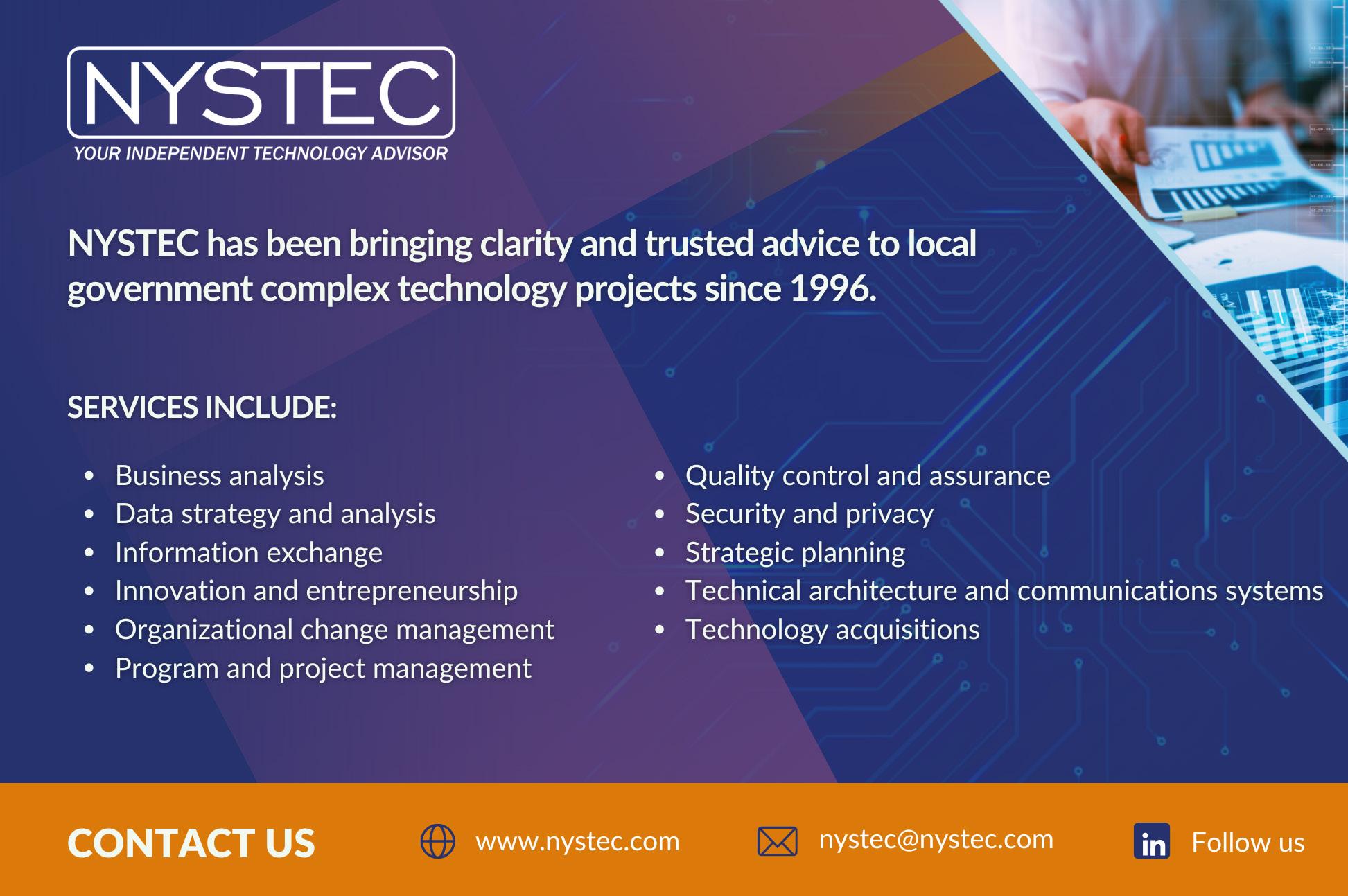

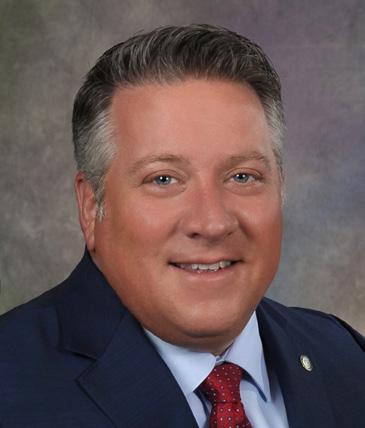
NYSAC OFFICERS
Hon. Daniel P. McCoy Albany County President
Hon. Benjamin Boykin II Westchester County President-Elect
Hon. Philip R. Church
Oswego County First Vice President
Dr. Kevin Watkins
Cattaraugus County Second Vice President
Michael E. Zurlo
Clinton County Immediate Past President
BOARD MEMBERS
Hon. Luis A. Alvarez, Sullivan County
Hon. Bruce Blakeman Nassau County
Mr. Christopher Ellis Jr., New York City Office of the Mayor
Hon. Richard R. House, Wayne County
Hon. Beth A. Hunt, Hamilton County
Hon. Margaret M. Kennedy, Otsego County
Hon. J. Ryan McMahon, II. Onondaga County
Hon. Steven M. Neuhaus, Orange County
Hon. Shawna Black, Tompkins County
Hon. Paul M. Wendel, Jr., Chautauqua County
PARLIAMENTARIANS
Hon. Herman Geist, Esq., Westchester County
Hon. A. Douglas Berwanger, Wyoming County
President's Page
Fostering excellence in county government and uniting the voice of our local leaders in Albany and Washington. That’s the mission of our New York State Association of Counties and this magazine reflects some of the many ways we’ve been doing that so far this year. Together, we are all working to improve our communities and strengthen New York State.
State Budget Advocacy
While this year’s $237 billion state budget continued its growth trajectory, unlike recent years, this year’s adopted spending plan did not shift new Medicaid costs to counties or increase the number of unfunded mandates on counties and local taxpayers. It actually provides new funding for counties and local governments in the form of infrastructure aid and a temporary increase in AIM funding for local governments. This was all good news for NYSAC and our members.
That said, the rising costs of providing governments programs and services in New York State has us concerned about how the state will fund its budget in future years. We know, based on history and experience, that when the state can’t afford to cover its costs, they tend to look to counties and local taxpayers to close fiscal gaps. Our team is on high alert for next year’s budget and for those that follow.
Reforming the In Rem Foreclosure Process
The State Budget that was passed will change the way counties foreclose on property owners with years of delinquent property tax bills. This was inevitable. Last year’s Supreme Court ruling in Tyler vs Hennepin meant that counties could no longer keep proceeds from the sale of foreclosed properties.
The NYSAC team worked with officials from a dozen counties to negotiate reforms that would meet the criteria set by the Supreme Court, protect taxpaying home and business owners, and cause the least amount of disruption for counties. In the end, our In Rem foreclosure process will change considerably, but the impact will be less draconian than it could have been without our tireless advocacy.
Calling for Immigration Reforms
In March, several New York county leaders traveled to the Southern Border as part of a fact-finding trip with the National Association of Counties (NACo). What we witnessed was eyeopening and disturbing. As a result, we immediately called on President Joe Biden and our congressional delegation to enact reforms designed to secure the border, invest in border agents, streamline the legal immigration process, and provide federal funding for local communities impacted by the influx of asylum seekers.
These are only some of the county-led initiatives that your association has championed in the first six months of this year. But we keep on working, and we encourage you to get and stay involved. I look forward to seeing your and all our colleagues at September’s NYSAC Fall Seminar in Sullivan County.
 Daniel P. McCoy NYSAC President
Daniel P. McCoy NYSAC President
NYSAC News | www.nysac.org 5


Through advanced diagnostics, proven asset management programs, and cooperative purchasing options, industry leader Tremco Roofing and Building Maintenance can help you to avoid emergency repairs, establish predictable budgets, and improve building performance to ultimately reduce facility lifecycle costs. Tremco Roofing and WTI are part of Tremco Construction Products Group. TO LEARN MORE OR TO REQUEST A COMPLIMENTARY CONSULTATION: Peter Hamilton l 518.391.9982 l PHamilton@tremcoinc.com l yourroofexperts.com l tremcoroofing.com Providing Roofing and Building Envelope Solutions Since 1928 At Nationwide®, participant priorities are our priorities. NRM-12870AO.5 (11/20) Nationwide, through its affiliated retirement plan service and product providers, has endorsement relationships with the National Association of Counties and the International Association of Fire Fighters-Financial Corporation. More information about the endorsement relationships may be found online at www.nrsforu.com. Nationwide and its agents, representatives and employees are prohibited by law from offering investment, legal or tax advice and do not do so. Please consult with your tax or legal advisor before making any decisions about plan matters. Retirement Specialists are registered representatives of Nationwide Investment Services Corporation, member FINRA, Columbus, Ohio. Nationwide and the Nationwide N and Eagle are service marks of Nationwide Mutual Insurance Company. © 2020 Nationwide From enrollment through retirement, our people, tools and education support participants so they can confidently make smart decisions. To find out more, contact: Brendan Morrison - Program Director 617-686-8990 morrib16@nationwide.com www.nrsforu.com
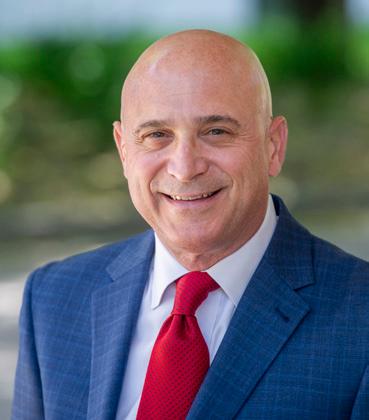
NYSAC STAFF
(partial listing)
Stephen J. Acquario, Esq. Executive Director
Adam Campney NYSAC Intern
Karen Catalfamo Office/Financial Manager
Patrick Cummings, Esq. Counsel
Patricia Gettings Assistant to the Director
Ryan Gregoire Legislative Director
Shea Hildenbrandt NYSAC Intern
Alexandra Regan Legislative/Policy Coordinator
Mark LaVigne Deputy Director
Dave Lucas Director of Finance & Intergovernmental Affairs
Juanita Munguia Business Development Manager
Tom Oldfather Communications Manager
Kate Pierce-Nimz Multimedia Specialist
Jeanette Stanziano Director of Education & Training
Chancey Young Member Information Manager
Director's Note
The New York State Senate and Assembly convened in January, enacted a State Budget in May, passed hundreds of bills throughout the past six months, and adjourned their proceedings in June. Your staff at the New York Association of Counties advocated for county concerns throughout the session, visiting with members at the State Capitol, negotiating with lawmakers and their representatives, holding and attending press conferences, and sending memorandum in support or opposition.
We hosted a Legislative Conference in February, our County Finance School in May, visiting counties and a holding dozen webinars on topics of interest to county leaders. Now we take a moment to look to the future, to scan the horizon, so that we can provide the training, research and material to prepare our member county officials for what may come around the next corner.
Here are a couple of items high on our list of things to watch out for soon.
Medicaid
While counties escaped any substantial Medicaid cost shift in this year’s State Budget, the increasing costs of the public health insurance program, and the way that the state is now accounting for local Medicaid costs, has us concerned.
The enacted budget increases Medicaid spending to over $100 billion, including local shares. From SFY 2022 through the end of SFY 2025 state share funding for Medicaid will have increased by more than 60 percent, marking another year of unsustainable growth. NYSAC and our member counties are concerned that, if unchecked, the growth of Medicaid spending will have a direct impact on counties that currently provide nearly $8 billion a year to the state’s Medicaid program.
Artificial Intelligence
At NYSAC and NACo, we recognize the vast potential that artificial intelligence (AI) has to impact the future of governance and public service delivery. As such, investing time and resources into understanding the benefits, opportunities, and challenges of AI is crucial for county leaders and officials. By familiarizing themselves with AI technologies, counties can harness the transformative potential of AI to streamline operations, enhance service quality, and improve decision-making processes. Moreover, training in AI provides skills necessary to navigate the ethical and regulatory complexities associated with deploying AI systems in public settings.
Marking A Centennial of Service
In 1925, a group of county officials came together to create the Association of County Officers to meet for formal training, sharing best practices of the day, and for networking. Later renamed, we have evolved to meet the changing needs of our members through 100 years of legislative, policy, home rule, and organizational changes that have impacted the way you govern today.
Beginning nexr January, NYSAC will celebrate 100 years of service to our members who work day-in and day-out to serve the needs of New Yorkers across this great state. We invite you to join us by attending our conferences, enacting proclamations and resolutions and celebrating our successes along the way.
 Stephen J. Acquario, Esq. NYSAC Executive Director
Stephen J. Acquario, Esq. NYSAC Executive Director
NYSAC News | www.nysac.org 7
NYSAC News
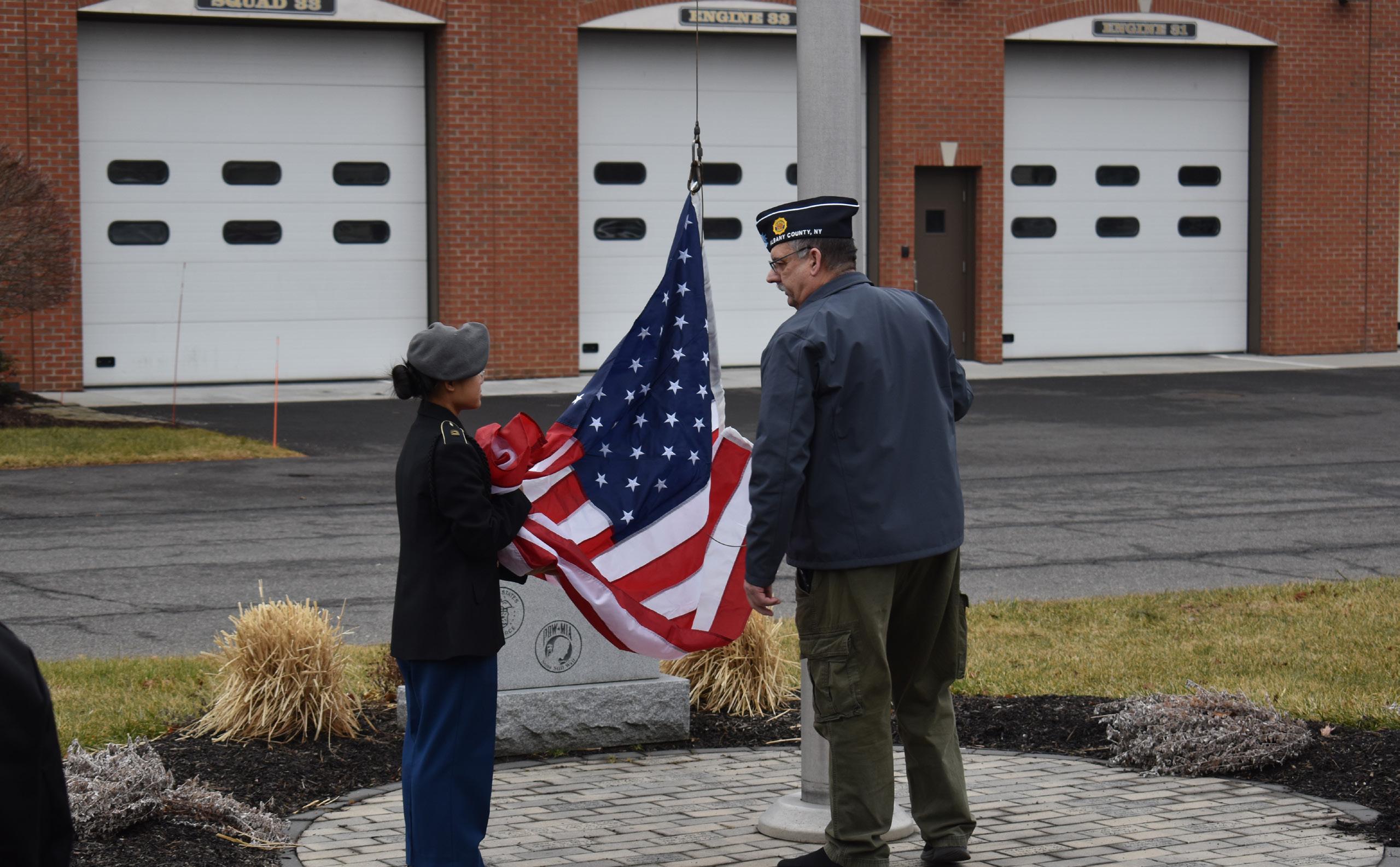
NYSAC News
NYSAC’s mission is to foster excellence in county government and unite the voice of New York’s county leaders.
President Daniel P. McCoy
Publisher Stephen J. Acquario
Managing Editor Mark F. LaVigne
Editor Tom Oldfather
Designer Kate Pierce-Nimz
Advertising Staff Juanita Munguia
Advertise with NYSAC
Contact NYSAC Business Development Manager Juanita Munguia at 518-465-1473 or jmunguia@nysac.org
Published 3 times a year by the New York State Association of Counties (NYSAC), the NYSAC News is the official publication of NYSAC, a non-profit, municipal association serving the 57 counties of New York State and the City of New York with its five boroughs for over 90 years. NYSAC’s mission is to foster excellence in county government and unite the voice of New York’s county leaders.
NYSAC NEWS MAGAZINE
515 Broadway, Suite 402, Albany, New York 12207
Phone • (518) 465-1473
Fax • (518) 465-0506
Send submissions to toldfather@nysac.org. Submissions should be 750 to 1,000 words and include a high resolution photo of the author. All submissions are subject to editing for clarity, content and/or length.
The advertisements and articles in NYSAC News in no way imply support or endorsement by NYSAC for any of the products, services or messages conveyed herein.
©2024 New York State Association of Counties
8 NYSAC News | Spring/Summer 2024
YORK
NEW
STATE ASSOCIATION OF COUNTIES
YORK STATE ASSOCIATION OF COUNTIES
NEW
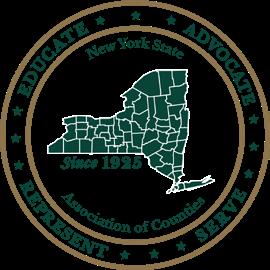

NYSAC News | www.nysac.org 9 Table of Contents Volume 46, Issue 2 Spring/Summer 2024 10 Local Sales Tax Collections Getting a Chilly Reception 13 From Brownfields to Brightfields 14 Oswego County Has Skills, and the Data to Prove It 15 2024 NYSAC Photo Contest Winners 16 Herkimer County to Launch Transformative Children’s Center 18 Energy Transition Resources for Local Leaders 21 The Rising Cost of NYS County Foster Care Programs 22 Otsego County & Hartwick College Working Together 24 NY Public Welfare Priorities 26 Prioritizing Student Wellness 32 Cultivating a Workforce Pipeline to Support the Clean Energy Transition 35 Advertiser Index Sylvan Beach,
County
Oneida
38 When Showings Occur... 40 The Best Line of Defense Against Cyber Threats 43 Challenging Residents to Get Outdoors 46 Cracking Down on Flavored Tobacco and Vape Products 48 Photos from NYSAC County Finance School 51 Operation Errands 52 New York's Landmark Voting Rights Act 54 Solar for Counties 57 The Case for Converting to a District Court System 58 New York Takes Action Against Food Waste
Photo by Cameron Sanborn
Local Sales Tax Collections Getting a Chilly Reception
 By Dave Lucas, NYSAC Director of Finance and Intergovernmental Affairs
By Dave Lucas, NYSAC Director of Finance and Intergovernmental Affairs
Through the first part of May, local sales tax collections for calendar year 2024 are returning to pre-COVID trends in some counties, with many others underwater compared to the same period last year. Sales tax is the top source of county revenue in just over half of the counties and is the primary source of revenue to keep pressure off the property tax levy.
All counties, including New York City, have seen sales tax barely budge during this period, up by only $30 million, .4 percent. The 57 counties are down $52 million in aggregate, -1.4 percent, ranging from -7.3 percent to +11.1 percent. New York City is up $82 million, 2.4 percent. Overall, 37 counties (64 percent) collected less sales tax than last year and 21 (36 percent) collected more during this period.
It is important to note that lower/slowing sales tax collections do not just impact county budgets but also town, city, village and some school district budgets as well. Most counties share the county sales tax (about 25 percent of aggregate collections) with their partner jurisdictions. The shared sales tax ranges from 5 percent to 69 percent of what the county receives (12 counties share no sales tax).


Source: Federal Reserve Bank of San Francisco
What is Different?
Several factors are contributing to the reversal in fortunes including very robust growth in the first part of 2023, cooling prices (especially energy), slowing wage growth, and consumers running out of steam (even though they manage to keep on spending…for now).
A key metric local government will be watching is the strength of consumer spending. Economists continue to be surprised by the pace of consumer spending but are concerned about that ability going forward. The Federal Reserve Bank of San Francisco has been monitoring federal COVID assistance to individuals and its impact on consumer activity since the beginning of the pandemic. They have concluded that nationwide a $2.1 trillion peak in excess savings generated by this federal aid occurred in August 2021 and as of March 2024, the surplus savings has largely been spent with an aggregate negative balance of $72 billion today.
Consumers can spend more to keep the economy moving forward but it may be at a slower pace than the last couple of years. Cooling prices can help, dipping into other savings and utilizing debt (credit cards, loans, etc.) can also buoy spending. A key lifeboat for consumers will be whether wages can continue to grow beyond the rate of inflation. Nationally, since February 2023, aggregate hourly wage growth has been higher than the rate of inflation, but the gap is narrowing.
10 NYSAC News | Spring/Summer 2024
New York State, Wage Growth & Sales Tax
While the nation overall has managed wage growth above the rate of inflation for the last 15 months, that has not been the case in New York State. In fact, from the beginning of 2020 through March 2024, monthly (year over year) wage growth in the Empire State has averaged 3.4 percent while the nation has averaged 4.7 percent. The lagging wage performance in New York is hitting consumer demand harder and is showing up in local sales tax collections. The higher cost of living in New York compared to other states can also dampen consumer sentiment.
For the 2024 state sales tax year (12 months ending February 2024) total taxable sales grew by 3.1 percent. This is close to the average annual growth rate of 3.8 percent for the 2015 to 2020 period leading up to the pandemic. The following categories of taxable goods and services led the way in the most recently completed sales tax year:
AUTOMOBILE DEALERS – up 3.9 percent,
RESTAURANTS – up 6.5 percent,
TRAVELER ACCOMMODATION – up 9 percent, led by 11 percent growth in NYC,
ELECTRONIC SHOPPING – up 7.4 percent,
GENERAL MERCHANDISE & SUPERCENTERS – up 1.8 percent,
GASOLINE STATIONS – up .8 percent.
These categories of taxable sales have been the top producers of sales tax for most of the 57 counties for the last five years, producing about 38 percent of total sales tax revenues on average. Less economically diverse counties may see their top six categories produce as much as 58 percent of their total sales tax revenues in any given year.
Counties will closely monitor sales activity during the remainder of 2024 and beyond.
MEETING PROCUREMENT NEEDS, CREATING JOBS IN COMMUNITIES



NYSAC News | www.nysac.org 11
11 Columbia Circle Drive West • Albany, NY 12203 800-221-5994 | www.nysid.org DISCOVER THE BENEFITS OF SOCIALLY RESPONSIBLE PURCHASING: Contact Katie Tucci, Sales Manager ktucci@nysid.org | (315) 558-2271 shop.nysid.org Let NYSID help diversify your supply chain: • A full range of custodial services & sanitizing options • Data imaging, document destruction, mail fulfillment, furniture refurbishment, other business services • Customized apparel, copy paper, air purifiers, paint, janitorial supplies, health care items, and more


CLEAN ENERGY CREATES JOBS

More than 171,000 New Yorkers now work in Clean Energy*






*NYSERDA New York Clean Energy Industry Report 2023

12 NYSAC News | Spring/Summer 2024
From Brownfields to Brightfields

 HBy Ed Romaine, Suffolk County Executive
HBy Ed Romaine, Suffolk County Executive
ow does a 128-acre Superfund site, quietly nestled in a residential neighborhood, mired in litigation, vacant for more than two decades with an annual tax bill costing the county $700,000 and $117 million in tax liens by Federal, State, and private claimants get redeveloped with community buy-in?
Suffolk County stepped in and stepped up – that’s how. Motivated by our twin desire to save the taxpayers from the annual $700,000 burden the property accrued and to environmentally remediate the property, the county worked with stakeholders to ensure a favorable outcome for all parties involved.
The Suffolk County Land Bank (SCLB), founded in 2013, serves as the engine to achieve the county’s preference of redevelopment over the development of pristine land.
While most of the 26 land banks in New York State work on zombie properties, the most vexing properties in Suffolk County are tax-delinquent, environmentally challenged properties. The SCLB pioneered mitigating risk and returning brownfields back to productive reuse by negotiating the first ever Memorandum of Understanding with the State Department of Environmental Conservation (DEC) and Comptroller’s Office to share sales revenue from the sale of tax liens of these properties in exchange for forgiving any environmental liens on the property. This partnership cleared the way for the sale of 16 brownfield properties in Suffolk County and set the stage for the landbank to tackle its largest property, the Lawrence Aviation Industries’ (LAI) property.
From the onset, the task was daunting. The 128-acre site was founded in 1951 as Ledkote Products Company of New York. LAI conducted titanium sheet metal manufacturing operations, mostly for the aeronautics industry, from 1959 to 2004.
Due to decades of illicit discharges of hazardous substances into the environment, including trichloroethene, acid wastes, oils, and sludge, the property was placed on the National Priorities List of the Federal Superfund program by the US Environmental Protection Agency (EPA) in 2000.
The county partnered with the SCLB in cooperation with government agencies and multiple claimants to advance a multi-faceted disposition plan for the site designed to meet regional needs, provide the community with a voice in determining future uses of the site, and to establish an agreedupon process for distribution of the proceeds of a potential sale of the property. Plan elements include: a railyard for the LIRR/ MTA to facilitate electrification of the Port Jeff branch, open space, and a 5MW solar array. The first of these elements is fifty years in the making.
Simultaneously, the SCLB worked with all the claimants and the court to develop the framework for a Settlement Agreement that would be eventually memorialized into a Court-Ordered Consent Decree.
With all parts of the property under contract, the county and landbank are working with the EPA and DEC in the coming months to facilitate the delisting of the site from Superfund status to facilitate redevelopment – the goal of any Superfund site.
Under my leadership, in partnership with the DEC, 14 steelframed and masonry industrial buildings were demolished to facilitate additional environmental investigation and future site redevelopment. Progress is expected to continue in 2024 as delisting takes place and contract closings occur on all three parcels that comprise the LAI site.
NYSAC News | www.nysac.org 13
Oswego County Has Skills, and the Data to Prove It
 WBy Rachel Pierce, Oswego County Director of Workforce Development, Executive Director of the Workforce Development Board of Oswego County
WBy Rachel Pierce, Oswego County Director of Workforce Development, Executive Director of the Workforce Development Board of Oswego County
orkforce development and skill-building are hot topics across all industries in the current economy. Businesses are attracted to areas that demonstrate they have a skilled local workforce that can support economic growth.
With the planned development of a multibillion-dollar semiconductor factory in Central New York, and the resulting need for a skilled workforce, Oswego County is focusing efforts to build and measure the skill levels and aptitudes of residents to demonstrate the potential of the local labor market through quantitative data. Workforce development and economic development agencies can then market the workforce, helping to ensure Oswego County residents can take full advantage of these new employment opportunities.
In support of this mission, the county elevated the former Employment and Training Division to full department status as the Department of Workforce Development. It also invested American Rescue Plan funding into the new department, which provides staff with more resources and greater flexibility in the use of funding streams to enhance services and fill gaps.
As a result of these efforts, in February 2024, Oswego County became the first county in the Northeastern United States to achieve the designation of a Work Ready Community through ACT WorkKeys. This prominent workforce development designation was attained through the hundreds of National Career Readiness Credentials (NCRC) earned by area students and individuals within the community. The NCRC is a portable, industry-recognized credential that clearly identifies an individual’s skills in workplace documents, applied math, and graphic literacy through standardized assessments. Being designated as a Work Ready Community allows Oswego County stakeholders to use the NCRC to help:
Business and industry know exactly what foundational skills they need for a productive workforce and to easily communicate their needs;
Individuals understand what skills are required by employers and how to prepare themselves for success;
Educators close the skills gap via tools integrated into career pathways with stackable industry-recognized credentials; and
Economic developers use an on-demand reporting tool to market the quality of their workforce.
Oswego County’s designation as a Work Ready Community was earned by meeting benchmarks and targets of assessments, credentials, and business supporters through collaborative partnerships between school districts, higher education, economic development, the local workforce development board, philanthropic organizations, community-based agencies, private businesses, and the unwavering support of the Oswego County Legislature.
“The best way I can think of to tell the world that Oswego County is ‘ready for business’ is to become the first certified ‘Work Ready Community’ in the Northeast,” said Oswego County Legislator Roy Reehil, who led the effort towards gaining the designation for the county starting in 2016. “With so much regional business growth in the pipeline, the implementation of the NCRC for businesses in hiring, and for students — college-bound or not — will become obvious almost immediately. Other counties across the Northeast are already looking to follow Oswego County's lead, but I'm proud to say, we will always be the first!”
Across the United States, ACT Work Ready Communities are giving individuals the opportunity to explore careers, identify their skill gaps, and improve their skills and work readiness. Employers will have a reliable measure to validate and identify skilled job candidates. Economic development agencies will have actionable data to market the quality of the local workforce, giving them a competitive advantage in recruiting new business growth and retaining existing employers. Being a Work Ready Community will bring systemic change to Oswego County and the opportunity to close the large skill and work readiness gap that exists, especially among historically disadvantaged populations. The process of expanding WorkKeys and the NCRC focuses on aligning education, workforce development, and economic development strategies for Oswego County.
As the first Work Ready Community in New York State and the entire Northeastern United States, Oswego County has positioned itself to provide opportunities for the existing labor force and emerging workforce to grow with the unprecedented economic boom on the horizon for the Central New York region.
14 NYSAC News | Spring/Summer 2024
2024 NYSAC
Photo Contest Winners
This year’s theme of What Makes your County Great sought to highlight the best there is to see in NY’s counties - from historic and scenic sights to local attractions and events.
We wanted to recognize the one-of-a-kind people, places, and things that make your communities great.
Be sure to look for these photos in the 2025 NYSAC "Counties in Focus" Calendar!





 Allegany County
Clinton County
Oneida County
Otsego County
Schoharie County
Sunset in Andover
Eclipse
Sylvan Beach
National Baseball Hall of Fame at Night
Vroman’s Nose in Middleburgh
Photographer: Mandi Joyce-Phelps
Photographer: Molly F. Ryan
Photographer: Cameron Sanborn
Photographer: William Jay Miller
Photographer: Fred Windholz
Allegany County
Clinton County
Oneida County
Otsego County
Schoharie County
Sunset in Andover
Eclipse
Sylvan Beach
National Baseball Hall of Fame at Night
Vroman’s Nose in Middleburgh
Photographer: Mandi Joyce-Phelps
Photographer: Molly F. Ryan
Photographer: Cameron Sanborn
Photographer: William Jay Miller
Photographer: Fred Windholz
Herkimer County to Launch Transformative Children’s Center
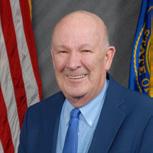 TBy Jim Wallace, Herkimer County Administrator
TBy Jim Wallace, Herkimer County Administrator
he Herkimer County Legislature has approved the building of a Herkimer County Children's Center in Ilion, NY. The 14,000 square foot facility will house a daycare (including infants), a children's mental health clinic, a BOCES pre-k classroom, developmental pediatrics, an Early Intervention therapy room, the Mohawk Valley Diaper Bank, a UCP developmental playgroup, as well as acting as a Connected Community Schools hub, a preceptorship site for Herkimer College, a space for childbirth education and lactation counseling, location to offer EFNEP nutrition education and local food access support.

What began as the brainchild of the Legislature and staff started years ago, for a daycare and mental health facility, has, through the leadership of Public Health Director, Christina Cain, and our entire team, grown into a one-stop shop for youth and family services.
Children in Herkimer County face significant social and physical health concerns that make the need for a crosssystems collaborative children's center imperative. There are approximately 3,000 children under the age of 5 in Herkimer County, accounting for just over 5 percent of the
county's population. According to the NYS Community Health Dashboard, the mortality rates for children ages 0-4 are exceptionally high at 26.0 per 100,000. Rates for children born with symptoms of neonatal withdrawal are exceptionally high at 32.8 per 1,000. Neonatal withdrawal symptoms are recognized by the Substance Abuse and Mental Health Services Administration as a significant risk for serious emotional disturbance and behavioral health challenges in early childhood and adolescence.
Herkimer County youth also have a high rate of disability. On a recent youth Risk Behavior Surveillance Survey of county high school students, 22 percent identified themselves as having long-term emotional problems or learning disabilities and 14 percent identified themselves as having longterm physical or health problems. From birth to 18, Herkimer County youth need immediate access to coordinated, strategic, and targeted services for physical, social, emotional, and behavioral health.

An additional challenge to Herkimer County families and youth is that the demand for quality childcare in
16 NYSAC News | Spring/Summer 2024
Herkimer County far exceeds availability. Childcare utilization in Herkimer County is 99-100 percent for toddlers, preschool, and school-age children. Infant utilization is estimated to be at 100 percent. This leaves approximately 8,000 children, ages 12 and under, and over 80 percent of Herkimer County children under 6 years old without formal/licensed childcare options.
The lack of access to early childhood education has also directly impacted services like Early Intervention and Preschool Special Education, doubling their caseloads over the last three years and consistently increasing the complexity and intensity of cases.
The proposed Children's Center would provide developmentally appropriate educational and social experiences as well as bridge the gap between families and community resources, including behavior management, socialization, early literacy support, kindergarten readiness, health services and social service provision and referrals.
For children in poverty, this early interaction positively impacts a variety of prosocial activities, including future academic performance and high school completion rates. In addition, childcare access has immediate impacts on local economies, women and minority populations, as well as the trajectory of generational poverty.
The Center will be centrally located in one of Herkimer County's most densely populated and impoverished areas. Ilion and its surrounding areas also have incredibly high levels of poverty, specifically for ages 6 and under. Ilion's poverty rate is approximately 35 percent for this vulnerable group, while its surrounding areas also range from 35 59.8 percent.
The project is a collaborative effort both programmatically and financially. We were very fortunate to receive guidance and significant financial support from Senator Schumer, Senator Gillibrand and Congresswoman Stefanik. Additional support is also being provided by Empire State Development, the Mohawk Valley Regional Development Council, our local Community Foundation, the County Legislature, along with the Lieutenant Governor.
Programmatically, we are working with Herkimer College, our local BOCES, Upstate Cerebral Palsy, Catholic Charities, Connected Community Schools, Healthy Families, Public Health, and Cornell Cooperative Extension, among others.
The targeted services provided are intensive, early intervention strategies that will mitigate the disparities families in Herkimer County experience while alleviating the social and economic impact these challenges have on society.


NYSAC News | www.nysac.org 17
See what our solutions can do for you. Kirk Arrowood, Regional Director karrowood@paloaltonetworks.com (917) 621-7099 Your landscape is always evolving. Accelerate your defense with natively integrated security platforms. Industry recognized. Constantly innovating. PUBLIC SECTOR

Energy Transition Resources for Local Leaders
An Energy Who’s Who in New York State
 TBy Mark LaVigne, NYSAC Deputy Director and Executive Director of the Municipal Electric and Gas Alliance
TBy Mark LaVigne, NYSAC Deputy Director and Executive Director of the Municipal Electric and Gas Alliance
he global shift from traditional fossil fuel-based energy systems to cleaner, more sustainable sources of energy, such as renewable energy and low-carbon technologies, is complex to navigate. We know where we are today and what the goals are for the future, but getting from here to there is not a straight path.
New York State’s Climate Leadership and Community Protection Act (CLCPA) has set aggressive goals for reducing emissions and increasing renewable energy use, putting pressure on local governments and schools to consider today’s supply options while planning for future alternatives.
Several state agencies and authorities will play an important role in shaping the future of New York State’s energy landscape. In this article, we delve into the distinct roles and responsibilities of key state-level energy organizations.
NYS Energy Research Development Authority (NYSERDA)
NYSERDA is a key player in advancing energy innovation and sustainability across the State. Established in 1975, NYSERDA encourages the deployment of renewable energy technologies, administers energy efficiency programs, and develops energyfocused initiatives to address climate change. As a co-chair of the Climate Action Council, the Authority played a central role in developing the Scoping Plan for achieving the CLCLA goals and is now responsible for implementing various initiatives outlined in the plan, including the economywide Cap-andInvest Program. NYSERDA also manages the Clean Energy Communities program, which was launched in 2016 to provide resources and funding to help local leaders implement clean energy solutions.
For more information about the Clean Energy Communities program, visit nyserda.ny.gov/Clean-Energy-Communities
Department of Environmental Conservation (DEC)
DEC serves as the primary regulatory agency tasked with protecting and enhancing the state's natural resources. Established in 1970, the DEC oversees initiatives related to land conservation, wildlife protection, and environmental justice, all of which are essential components of the State’s broader strategy to combat climate change and achieve the CLCPA’s objectives. The Department is now focused on developing and implementing policies and regulations aimed at reducing greenhouse gas emissions, enhancing air and water quality, and mitigating climate change impacts. DEC also administers the Climate Smart Communities (CSC) program, which offers grants, rebates, and technical assistance to help local governments reduce greenhouse gas emissions and adapt to a changing climate.
For more information on the Climate Smart Communities program, visit climatesmart.ny.gov
The New York Power Authority (NYPA)
NYPA is one of the largest state-owned electric utilities in the nation. Established in 1931, NYPA operates and maintains various power generation facilities across the State. It implements energy efficiency programs aimed at reducing energy consumption and greenhouse gas emissions across various sectors, including residential, commercial, and industrial facilities. NYPA’s most recent strategic plan, VISION2030, provides a roadmap for meeting the energy demands and challenges of this decade while moving aggressively toward the CLCPA targets.
For more information on VISION2030 and NYPA’s products and services, visit www.nypa.gov
18 NYSAC News | Spring/Summer 2024
Public Service Commission
The New York Public Service Commission is the State’s regulatory body responsible for overseeing utility companies operating within the State, including six major electric and gas utilities, five major gas-only utilities, and nearly 40 municipal utilities. To achieve the requirements outlined in the CLCPA, PSC sets regulatory standards, including the Clean Energy Standard, and performs comprehensive reviews related to CLCPA-related implementation. www.dps.ny.gov
NYS Independent System Operator (NYISO)
NYISO is a private nonprofit organization responsible for operating the State's electricity grid and wholesale electricity markets. Established in 1999, NYISO is charged with ensuring the reliable and efficient transmission of electricity across the State. They play a vital role in ensuring a reliable electric grid during the transition to clean energy technologies by regularly assessing the state of change on the grid and determining what new resources and transmission upgrades may be needed to maintain reliability.
NYISO provides an online dashboard with wholesale electricity pricing, which encourages innovation, competition and lower costs. To see the dashboard, visit www.nyiso.com/markets.
Navigating the transition to a clean energy economy requires a collaborative effort involving various state agencies and authorities. Each entity has a unique contribution to achieving the State’s clean energy goals, As the State continues its transition towards a cleaner and more resilient energy future, collaboration and innovation among these organizations will remain essential in addressing the challenges and opportunities in the evolving energy marketplace.
Municipal Electricity and Gas Alliance (MEGA)
MEGA is a non-profit local development corporation comprised of schools and local governments that collaborate to procure and manage electricity and natural gas supply contracts. First formed in 1998 to leverage collective purchasing power and negotiate favorable energy supply agreements, MEGA helps its members secure stable and competitive energy rates and supports local leaders as they navigate the current energy transition in a way that helps them better serve local taxpayers. www.megaenergy.org


Save the Dates 2024 NYSAC Fall Seminar
September 9 - 11

Resorts World
Monticello, NY
Sullivan County
20 NYSAC News | Spring/Summer 2024
The Rising Cost of NYS County Foster Care Programs


 MBy Tim Ball, Executive Vice President; Courtney Handy, Director; and Josh Bills, Manager; The Bonadio Group
MBy Tim Ball, Executive Vice President; Courtney Handy, Director; and Josh Bills, Manager; The Bonadio Group
any counties have experienced a significant rise in the cost of their foster care programs over the last two years. Whether you’re a smaller county with 30 children in care or a large county with 500 children, you’ve probably noticed that costs are rising at a rate that surpasses both prior years and inflation. But why? Below, we highlight the most common factors, both internal and external, that are driving costs up based on our experiences working with counties of varying sizes and demographics.
1. Due to OCFS’s Family First Prevention Services Act Plan, many departments have successfully implemented robust processes to identify and utilize appropriate kin as resources in a safe and efficient manner. This plan was implemented in part to decrease the number of children placed in traditional community-based foster care homes or residential facilities and keep children with family or close friends. In one county we worked with, these processes resulted in the number of children in relative placements increasing by over 500 percent.
While this is a positive program that keeps children with relatives, those relatives are registering as foster homes and getting paid room and board rates approximately $600 more per month than the typical grantee amount, and an additional $1,050 per month more for each additional child.
2. For several reasons, departments often rely on a combination of DSS certified (community) homes and voluntary agencies to place their population of foster care children. Administrative fees through voluntary agencies have increased by approximately 50 percent over the past three years, according to OCFS’s Maximum State Aid Rates (MSAR). Counties that rely significantly on voluntary agencies for care have thus absorbed more of these costs than those who primarily use foster homes certified internally through the department.
3. All children are assigned a Level of Care at removal with a corresponding per diem rate. While OCFS provides an official form that counties use to document, communicate, and approve the rates to foster parents, the criteria for qualifies as a basic, special, or exceptional condition is

vague and subject to interpretation. The differing costs of these rates amount to thousands of dollars per year per child. The frequency of re-evaluating these rates is at the discretion of the department and may not accurately reflect the child’s current condition if not periodically reviewed.
Given these drivers of increased costs in foster care programs, it is critical that Title IV-E is effectively managed to ensure the county is maximizing eligible federal reimbursement. With approximately 50 percent of qualifying foster care costs reimbursed, incorrect interpretations of Title IV-E rules or breakdowns in internal processes can cost the county many thousands of dollars each year. This is especially important if a child is receiving a special or exceptional rate for care that is significantly higher than the basic rate.
The responsibilities of Title IV-E procedures are frequently assigned to a single individual or a small team within a department that may be lacking proper oversight. Given the increase in overall foster care costs, high employee turnover, and unique complex case circumstances, it is critical that eligibility determinations are made by well-trained employees, include supervisory review, and that full cooperation (and education) is received from other department employees (e.g., caseworkers and legal staff) whose work directly contributes to an accurate determination.
Although the factors driving increased costs are frequently beyond the department's control, optimizing Title IV-E reimbursements can empower counties to better handle the fiscal repercussions of foster care expenses.
NYSAC News | www.nysac.org 21
Working Together Hartwick College and Otsego County
 CBy Professors Matthew Chick, Laurel Elder, and Zachary McKenney, Co-Directors of the Hartwick Institute of Public Service and Otsego County Board of Representatives member Meg Kennedy
CBy Professors Matthew Chick, Laurel Elder, and Zachary McKenney, Co-Directors of the Hartwick Institute of Public Service and Otsego County Board of Representatives member Meg Kennedy
olleges and the counties in which they are located have many common interests, but all too often they are disconnected from one another. Many students do not even know the name of the county where they attend college, let alone what the county government does and how that affects their lives.
This past year, Hartwick College and Otsego County charted a new path.
In September 2023, Hartwick College officially launched the non-partisan Institute of Public Service. The goal of the Institute is to work with local, county, and state government leaders to engage young people in democracy, creatively address challenges facing our region, and inspire the next generation of public servants. These goals serve the interests of both the college and the county.
Hartwick also hosted a meeting of the New York State City/ County Management Association in October and a pivotal Otsego County Government Strategic Planning Session led by the county’s Strategic Planner Peter Fairwether in March. Students attended both of these events gaining insights into a range of issues from the potential use of AI in local government to the financial constraints and opportunities facing Otsego County.
Reflecting on these events, Otsego County Representative Meg Kennedy pointed out that “Student interaction brings home the importance of decisions we make today that guide the future of the next generation.”

Over the past year, Otsego County leaders and Hartwick College have embarked on a dynamic partnership to achieve these goals. Hartwick College has acted as a host for county government meetings, providing logistical support and giving county officials the opportunity to get to know their young constituents. Government officials have used the opportunity to provide college students with first-hand insights into the issues facing NY’s counties and to offer valuable career networking opportunities.
For example, in October, supported by a grant from the Community Foundation of Otsego County, Hartwick College hosted a forum and reception for Otsego County Board of Representative candidates where community members and college students got to ask questions and speak one-on-one with those vying to represent them.
In April, the Hartwick Institute of Public Service in partnership with the League of Women Voters of Cooperstown and Oneonta, hosted an event focused on the future of Otsego County. This event featured a presentation by SUNY Oneonta Professor Alex Thomas, co-founder of the PLACES Institute, who shared his research on the demographic and economic trends that illustrate the past and future of Central New York. The event also featured presentations by Otsego County Board members, including Board Chair Edwin Frazier. This event brought together county leaders and interested citizens of all ages to debate and exchange views and ideas.
In honor of Women’s History Month, Otsego County elected officials and the Hartwick Institute of Public Service worked hand in hand to help inspire the next generation of women public servants. Three members of the Otsego County Board of Representatives–Michelle Catan, Meg Kennedy, and Andrienne Martini–headlined a well-attended event on Hartwick’s campus where they spoke about their path to becoming public office holders as well as why their work is so meaningful.
22 NYSAC News | Spring/Summer 2024
As Otsego County Representative Meg Kennedy describes it, this event provided “an opportunity to discuss motivations and challenges for women across the political spectrum, to empathize with each other, share stories with a common thread, and provide real life inspiration for the next generation of women leaders.”
And Sarah Matumbura, a first year Hartwick College student, was indeed inspired. With her nomination by Oneonta Mayor Mark Drnek to the Oneonta Commission on Human Rights and Community Relations, she has now become the first college student appointed to a city commission in Oneonta.
Finally, and critically important, Otsego County Administrator Steve Wilson and the Otsego County Unified Court

System have welcomed college students into their workplaces as interns. Students have been able to witness and play a role in the functioning of Otsego County government and gain skills and connections to help launch their careers.
The end result of this collaboration? First, a county government that is more deeply connected to its constituents and a partnership with the colleges that are a key source of economic, creative, and intellectual power in their region; and college students who understand themselves to be not just four year visitors, but actual citizens of Otsego County, possessing the skills and knowledge needed to become the next generation of public servants in county government and beyond.



NYSAC News | www.nysac.org 23
Municipal Engineering Transportation Planning & Engineering Asset Management Wastewater Management Water Supply Solid Waste Engineering Facilities & Architectural Engineering Environmental Consulting Land Planning & Site Design 800.724.1070 bartonandloguidice.com IMPROVING NEW YORK COUNTIES FOR OVER 60 YEARS!
NY Public Welfare Priorities
 TBy Matt Barron, Director of Policy & Communications, New York Public Welfare Association
TBy Matt Barron, Director of Policy & Communications, New York Public Welfare Association
he New York Public Welfare Association represents all 58 local departments of social services statewide. Our members are dedicated to improving the quality and effectiveness of social welfare policy so that it is accountable to taxpayers and protective of vulnerable people.
NYPWA would like to thank government leaders, and advocates that worked diligently to create the final budget agreement. We are pleased that no major changes or cuts were enacted for our local departments of social services.
Leadership and Expertise in Shaping Public Policy
Representing NY's 58 local social services disctricts
Additionally, a Code Blue emergency is when temperatures in specific areas are expected to drop to 32 degrees (including wind chill) for two hours or more during a 24-hour period. No one who is homeless and seeking shelter during a Code Blue will be denied. Unfortunately, we are seeing community pushback, and a lack of increased funding for establishing new Code Blue shelters to accommodate all who need them. Code Blue shelters have a strict list of rules, and struggle to serve individuals with substance abuse issues, mental health issues, or exhibit unruly or abusive behavior to themselves or others.
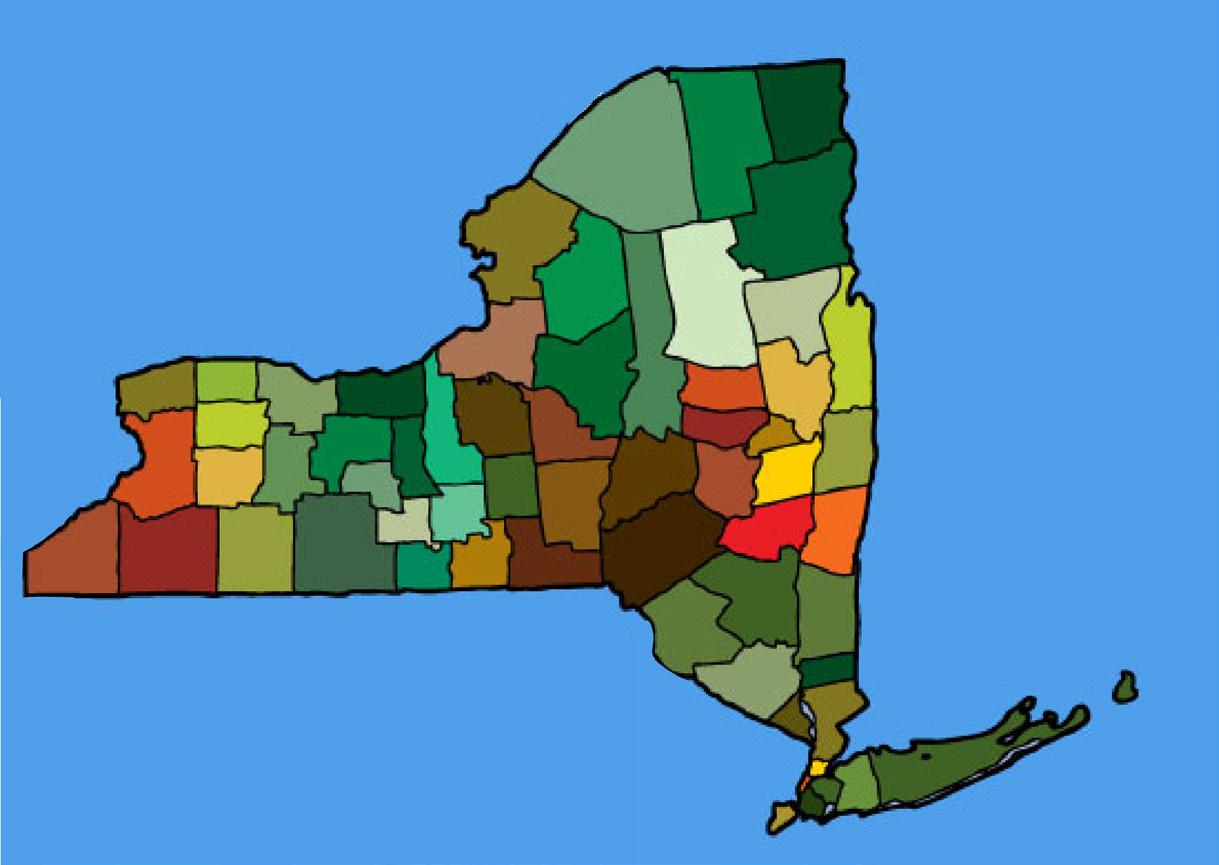
Several items that we monitored this legislative session were increases in shelter and rental arrears, which could help keep people in their homes as well as assist their financial footing in tough times. NYPWA members also continuously track regulatory changes that often come from state agencies such as ODTA, OASAS and OCFS.
NYPWA will be keeping track of changes made to the Medicaid Program and the Consumer Directed Personal Assistance Program (CDPAP) that were enacted in the state budget. The state says that there will be millions of dollars of savings and increased monitoring of fraud in the CDPAP.
State mandated programs (such as Medicaid and increased local share of foster care or social services) consume substantial portions of county budgets, so keeping those mandates in check will allow counties to build balanced budgets and stick to them.
These people have no recourse if a Code Blue shelter will not accept them for these extenuating circumstances. We need to develop a solution to make sure these people get the shelter and services they need in the winter months.
Finally, we applaud state lawmakers for extending the Hiring for Emergency Limited Placement (H.E.L.P.) Program until the end of the year, but we would urge them to think about extending it for even longer. We are having success filling multiple titles in various offices because of this program. Reducing staffing shortages in this field is crucial so people can get the assistance that they need.
We at NYPWA, and on behalf of the local Departments of Social Services we represent, respect the work completed during the rest of session, which will hopefully enhance social welfare policy for all New Yorkers.
24 NYSAC News | Spring/Summer 2024

NYSAC News | www.nysac.org 25
Prioritizing Student Wellness County Mental Health Departments and Schools
Partnering in the Community

 RBy Michael Orth, MSW, Community Mental Health Commissioner, Westchester County, Co-Chair for the NYS Conference of Local Mental Hygiene Directors (CLMHD) Children & Families Committee
Richelle Gregory, MEd, Director of Community Services, Clinton County, Co-Chair for the NYS Conference of Local Mental Hygiene Directors (CLMHD) Children & Families Committee
RBy Michael Orth, MSW, Community Mental Health Commissioner, Westchester County, Co-Chair for the NYS Conference of Local Mental Hygiene Directors (CLMHD) Children & Families Committee
Richelle Gregory, MEd, Director of Community Services, Clinton County, Co-Chair for the NYS Conference of Local Mental Hygiene Directors (CLMHD) Children & Families Committee
ecognizing the pressing need to address mental health challenges among young people, the Directors of Community Services (DCSs) and County Mental Health Departments have facilitated the implementation of a variety of innovative programs in schools. From universal prevention measures and resources for support, to targeted interventions and wraparound services, partnerships with schools are resulting in the creation of environments that prioritize the mental well-being of youth and foster their overall success. This article features collaborative school-based initiatives from across the state, shedding light on their impact and the strides made in improving mental health outcomes.
Onondaga
The Onondaga County Department of Children and Family Services’ School Based Initiatives (SBI) Division has significantly expanded mental health support for children and youth in all schools, catering to various levels of need through a Multi-Tiered System of Support model. This model introduces three services in each school: a Mental Health Outpatient Clinic, a Family Systems Liaison, and a Student Engagement Specialist. By fostering community collaboration, this approach proactively identifies and addresses student needs, thereby preventing crises. Student Engagement Specialists offer universal support to all students, utilizing trauma-informed, skill-focused, and restorative-based strategies to enhance social development and academic success.
The Family Liaison Program provides short-term case management, linking families to external services and supports, while School Based Mental Health Clinicians conduct inschool behavioral health assessments and ongoing treatment, collaborating with school teams to support children across different settings and minimize missed instruction time.
SBI also facilitates professional development and coaching for districts and buildings to implement the Multi-tiered System of Support (MTSS) effectively. Collaboration with partnering
entities such as OMH Suicide Prevention Center of NY, NYS Community Schools Technical Assistance Center, Office of Cannabis Management (OCM), BOCES, and OnCare ensures comprehensive support and assistance in MTSS implementation.
Essex
Since the fall of 2023, five Positive School Environment Teams (PSETs) have been launched in schools across Essex County. PSET, a student-led initiative with guidance from advisors, aims to foster a culture of positivity, acceptance, and empowerment among 7th to 12th-grade students, promoting a sense of belonging and connection. Coming this fall, three more schools are slated to introduce PSET. This initiative is made possible by funding from OMH's Treatment Support Grants and the SAMHSA/OMH System of Care grant awarded to the county in 2020.

26 NYSAC News | Spring/Summer 2024
Clinton
The Community Services Board (CSB) is partnering with the local opioid coalition, Substance Abuse Prevention and Recovery in Clinton County (SPARCC), to utilize Opioid Settlement Funds to create a school-based, youth led “Junior SPARCC.” Every school district will be able to apply for up to $30,000 to develop a youth led program for their school. Each school that receives funding will identify school personnel and youth who will participate in SPARCC and the Community Services Board.
Orange
The Orange County Department of Mental Health (OCDOMH) operates school-based clinics in seven districts, enhancing access to care for children and families, even offering home or community visits when school-based appointments aren't feasible. Clinicians provide mental health consultation and education to school staff and parents, participating in multidisciplinary meetings as necessary.
They also coordinate with other child service systems as required, ensuring clients at the school-based clinics can access psychiatric care through the county’s main clinics.
Opioid Settlement funds were allocated to the Alcohol and Drug Awareness Council (ADAC) for IMPACT (Improving Mindsets, Policies, And Communities, Together), a pioneering initiative focusing on universal mental health and substance use prevention. Utilizing evidence-based practices, IMPACT assesses community and school prevention needs, plans interventions, implements programs, and evaluates progress. IMPACT Prevention Specialists collaborate with the county's Mental Health Prevention Specialist to tailor presentations, programs, and practices for the learning communities served.
In 2023, the Orange County Youth Bureau collaborated with Orange-Ulster BOCES, United Way of Dutchess and Orange Counties, and the Orange County Department of Mental Health to expand the Safe School Ambassador (SSA) program. Through collaboration with Community Matters, schools have the opportunity to transition to a Train-the-Trainer (TOT) model after initial training. Community Matters offers ongoing support to schools and districts adopting the TOT model, ensuring long-term sustainability. This approach embeds SSA Program principles into school practices, influencing thinking, communication, and behavior.

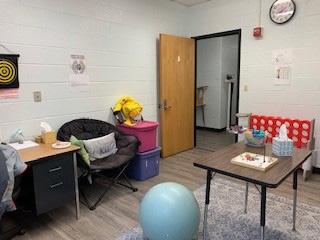
Chautauqua
The Chautauqua County Department of Mental Hygiene (CCDOMH) is actively involved in a fresh endeavor known as SPEAR: Shifting Power for Equity and Results. This program blends leadership science and change management principles through the application of positive organizational science. SPEAR faculty support cohorts of 50-100 or more participants through a two-phase engagement that occurs over two years. SPEAR works with systems to explore their communities and cultivate significant partnerships. SPEAR then guides these partnerships through a process of identifying shared desired futures in areas where there are inequitable outcomes; for example, the number of Black and Brown youth entering foster care or experiencing violation of probation. The resulting projects provide community-driven primary and secondary prevention services to children and families in their community with implementation and sustainability supported by the months of coaching of the experienced SPEAR faculty.
Westchester
This year, Westchester County Department of Community Mental Health developed "Building Comprehensive School Mental Health Systems" training for school administrators. This program encourages districts to evaluate their Socialemotional Multi-Tiered System of Support infrastructure, going beyond readiness for integrating school-based mental health clinics. The county, along with local BOCES partners, will provide this training widely through 2024-2025 to support districts exploring integrated mental health services.
Westchester County's Children's System of Care MTSS offers Universal Level Training, ongoing Youth & Teen Mental Health First Aid, CODA Training, and a co-occurring prevention curriculum for High Schools funded by Opioid Abatement Settlement funds. They provide training on School Avoidance and Suicide Risk Assessments, coaching models, and have established 75 School-Based Mental Health Satellite Clinics. Evidence-Based Co-occurring treatment for adolescents is supported by SAMHSA's TREE grant and Opioid Abatement Settlement funds.
NYSAC News | www.nysac.org 27
6th Annual Co-Occurring Disorders
Awareness (CODA) Youth Summit
Westchester County DOMH recently collaborated with local organizations to hold the 6th CODA (Co-Occurring Disorders Awareness) You(th) Summit. This annual interactive summit equips hundreds of students with foundational knowledge on co-occurring disorders and promotes awareness among peers. Schools will further this work by celebrating Co-Occurring Disorders Awareness week in April.
12th Annual Myra Alfreds Roundtable
Annually, the Myra Alfreds Roundtable commemorates Children's Mental Health Awareness Day and National Foster Care Week, bringing together key stakeholders from the local system of care to address pressing issues in children's mental health. This year's Roundtable, "MAXIMIZING SCHOOL & PROVIDER PARTNERSHIPS: What System of Care Partners Can Learn from the Community Schools Model," will spotlight successful collaborations between schools and community partners.

Lewis
In collaboration with counseling staff from local school districts, Lewis County implemented a "wraparound" approach for its Children's Single Point of Access (SPOA) service. This involved actively including children and families in crafting comprehensive plans aimed at enhancing engagement, support, and overcoming barriers to care. Over a year, these families were closely monitored, and consistent support led to positive outcomes. Strengthening the bonds between school districts and community-based organizations marked a significant stride toward enhancing services for youth.
Rockland
Rockland has partnered with a local agency and school district to implement a Dialectical Behavior Therapy (DBT) Skills pilot program in one of the middle schools. The program reaches every student in the school and aims to teach tangible DBT Skills that can help to reduce anxiety, depression, improve interpersonal relationships and emotional regulation. The entire school staff is given the DBT vocabulary and breakdown of skills to incorporate into their daily lesson planning.
For example, art teachers have created projects that allow students to draw their coping skills, create anger icebergs, and work on mindfulness activities. The goal is to expand into the elementary and high schools so that students are provided with DBT building blocks throughout their academic career.
In 2020, Rockland County contracted with a children’s mobile intervention team based on the Mobile Response and Stabilization Service model. This service allows for a childfocused crisis response team to provide support and services immediately and up to eight-weeks after the initial call.
The minimum threshold of what a crisis is defined as makes this program unique among crisis services and allows the family to identify what a crisis is. Schools are an integral part of this workflow and initiate the majority of referrals, thus avoiding calls being turned away from the designated mobile crisis provider due to low severity (ie: no risk of harm to self or others) and dissuades police involvement.
The partnership between County Mental Health Departments and schools underscores a proactive stance in tackling the urgent mental health needs of young individuals. These collaborative efforts statewide have demonstrated considerable progress in enhancing mental health outcomes for youth. Sustaining these partnerships and innovative strategies is essential for cultivating environments that support the comprehensive development and success of our youth.
Future Prospects
As the need for mental wellness and treatment support continues to grow, County Mental Health Departments continue to build on mental health initiatives in schools, including expansion of school-based supportive counseling (SBSC) and Mental Health First Aid (MHFA) and Teen MHFA, which provide essential skills for educators and students to reduce stigma and intervene early.
Implementing universal Mental Wellness programs in schools offers a proactive approach to nurturing emotional resilience from an early age. Embracing these opportunities could lead to more supportive environments for the mental well-being of our youth.
28 NYSAC News | Spring/Summer 2024


NYSAC News | www.nysac.org 29
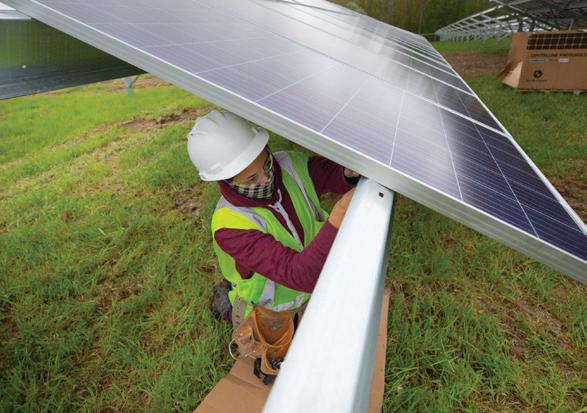
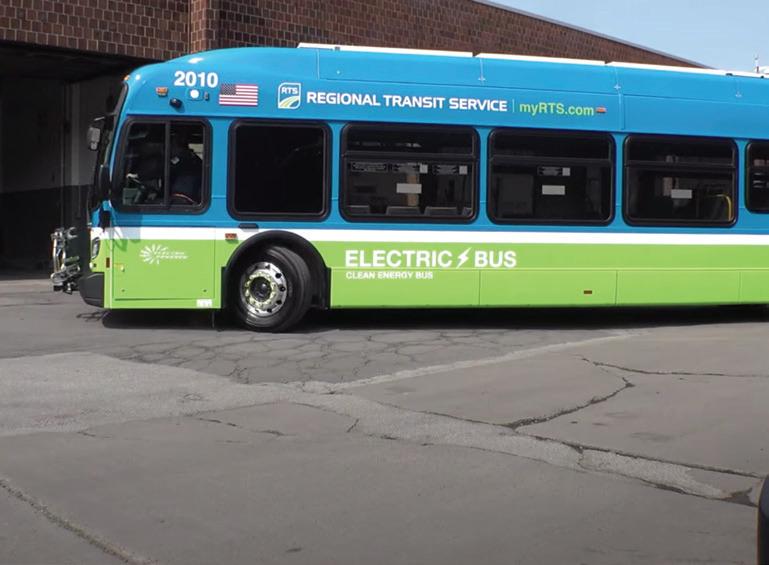
Clean Energy Solutions from NYPA
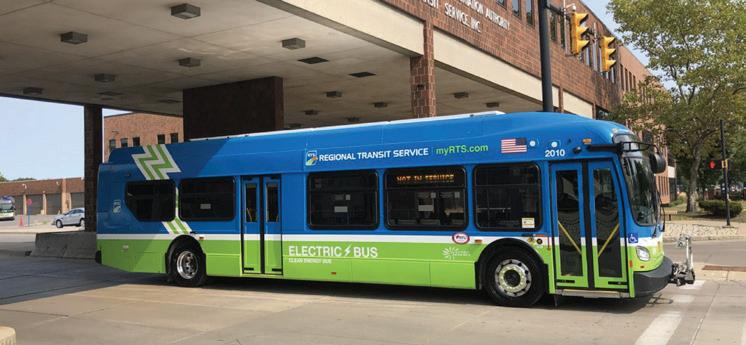
Energy Savings. Carbon Reduction. Community Benefits.

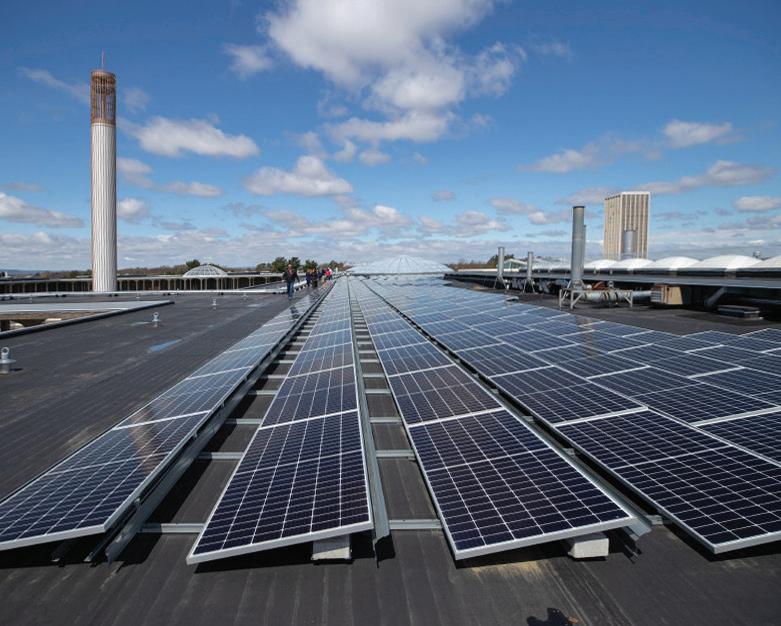


NYPA is a leader in clean energy solutions and power programs in New York State.



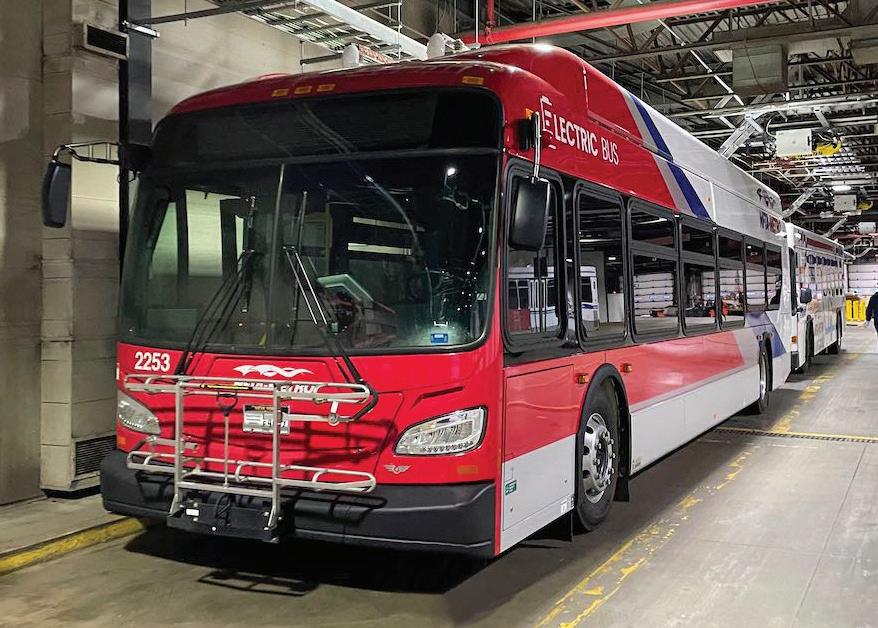

We are experts at working with local governments, and help them across the State develop clean energy plans that balance cost, sustainability, and community goals.
Our experts bring proven audit, planning, procurement, and implementation solutions— together with knowledge of New York State policy, grants, and incentives. Talk with us about NYPA’s streamlined bid and procurement process—saving customers time and money.
Let our project managers and engineers serve as an extension of your team—working with you to develop a roadmap for energy savings and GHG reduction.
To learn more, provide your information at nypa.gov/services123 EnergySolutions@nypa.gov

nypa.gov/services
30 NYSAC News | Spring/Summer 2024
ENERGY EFFICIENCY | INTERIOR LED LIGHTING AND STREET LIGHTS | EV FLEET INFRASTRUCTURE | SOLAR AND STORAGE | ELECTRIFICATION | POWER PROGRAMS
County Government Institute
The NYSAC County Government Institute was founded in 2004 in the spirit of Dennis Pelletier’s commitment to good government, informed discussion and civil discourse.
To enroll, contact Chancey Young, Member Information Manager via email at cyoung@nysac.org or call 518-465-1473.
Upholding the pillars of good govern ment: Leadership, Integr ity, Accountability.

Charging A New Generation of For Business Solutions Learn More
EV
Cultivating a Workforce Pipeline to Support the Clean Energy Transition
 TBy Bridget Gibbons, Westchester County Director of Economic Development
TBy Bridget Gibbons, Westchester County Director of Economic Development
he number of jobs in clean energy across New York State continues to rise, with 5,800 jobs added in 2022, according to the New York State Energy Research and Development Authority (NYSERDA) 2023 New York Clean Energy Career Report. In that report, more than nine in ten employers stated it was at least somewhat difficult to hire clean energy workers, with 45 percent reporting that it was “very difficult.”
The growing need for workers, and the continued difficulty in hiring skilled talent, underscores the need for increased investment in workforce training and pipeline development, which will ensure that all New Yorkers, regardless of background, can access clean energy employment opportunities.
As clean energy career opportunities continue to expand (there are currently 171,000 clean energy workers across the state), government can play a critical role in connecting employers with residents looking to enter the field, build new skills, or pivot existing skills to a new industry.
Whether a clean energy ecosystem currently exists in your area, or you are looking to grow the industry and attract new and relocating businesses, creating and supporting a clean energy workforce pipeline should become a central aspect of your economic development strategy.
Clean energy has been a growing part of Westchester’s economy for several years, and our excellence in renewable energy has made us a key component of New York State’s climate solution. Our list of clean energy employers is growing, with several upand-coming firms and industry leaders calling Westchester home, including Dandelion Energy and Brightcore Energy in the geothermal sphere, and solar firms such as Sunrise Solar, Quest Solar, and Sun Blue Energy.

In order to enable us to help Westchester County’s existing clean energy businesses grow, we have partnered with Sustainable Westchester, a municipally-led shared service that delivers climate solutions to the governments, businesses,
organizations, and people of Westchester County, and in 2023 launched the Clean Energy Careers Accelerator Program. The program brings together more than 30 key stakeholders through a Careers Working Group to identify the workforce needs of the sector and is tasked with creating strong clean energy career pathways.
Through the Careers Working Group, we have taken a deep dive into the county’s clean energy ecosystem, researching the types of clean energy positions that are open and evaluating the job training currently available. Through an employer survey, businesses shared their current needs, the roadblocks they have come across in trying to fill open positions, and their anticipated workforce needs.
When looking at projected job growth and available training in sectors such as solar, geothermal, and heat pumps, we identified skilling-up geothermal drillers as one of the top needs and are working on creating a training program for this position in 2024. Through our conversations, we learned that while some employers prefer to recruit out of training programs, others can offer on-the-job training. One example is Mount Kisco-based Dandelion Energy, which created a training program where a trainee is partnered with an experienced driller and within six months can move onto their own rig with a trainee. This
learn-by-doing model allows Dandelion to grow the number of skilled driller technicians employed by the company.
One of the biggest steps our Clean Energy Accelerator Careers Working Group has taken is partnering with New Yorkers for Clean Power to host the Westchester County Clean Energy Careers Job and Resource Fair in April 2024. The event drew more than 150 attendees, ranging from clean energy industry advocates, environmental leaders, and employers to job seekers and students. It provided job seekers the opportunity to explore clean energy career pathways and connected clean energy solution providers to a qualified workforce. This is one of the many job fairs that the Office of Economic Development hosts throughout the year, including those for individuals with disabilities and those who are justice-impacted/formerly incarcerated. Many residents have transferrable experience, such as sales and project management, that can help them succeed in roles in clean energy.
Building a robust and just clean energy economy in New York requires a strong focus on workforce development and training. It is crucial to ensure that all New Yorkers have access to opportunities in this sector. Without a skilled workforce, the state cannot effectively achieve its clean energy objectives.




34 NYSAC News | Spring/Summer 2024 No extra cost, pay only for the power you use Access to power from renewable sources Control your energy costs Put the power of MEGA to work for you GET IN TOUCH CUSTOMERS 25 YEARS P O WERING P ARTNERSH I P MEGA MUNICIPAL ELECTRIC & GAS ALLIANCE Save staff time and money in local budgets MEGA is an aggregator of electricity, natural gas and renewable power. MEGA’s primary objective is to achieve the most competitive prices for its members to minimize the cost of energy. We serve more than 300 municipalities and non-profits throughout upstate New York. Working with county governments, as well as towns, villages, cities, and school districts. www.MEGAenergy.org info@megaenergy.org P.O. Box 88 Ithaca, NY 14851-0088
Advertiser Index
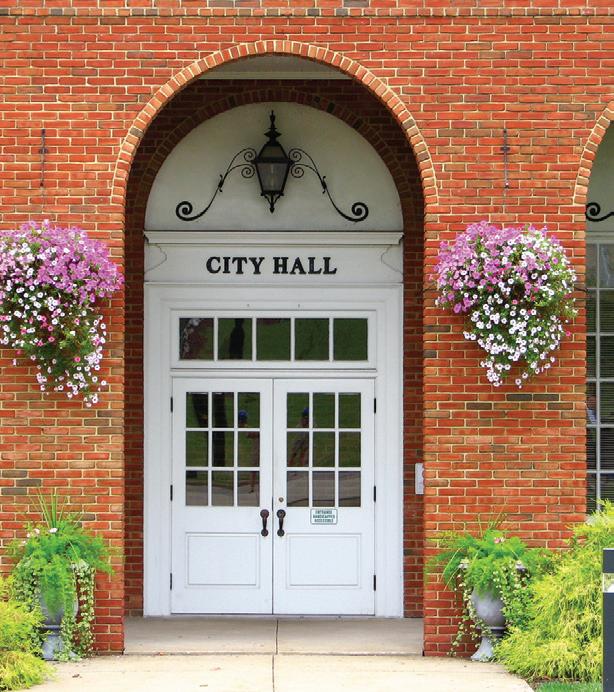


• Over 800 counties, cities, towns, villages, school districts and special districts participate in NYSHIP • More than 1.2 million public employees, retirees and their families have health insurance through NYSHIP
For additional information regarding The Empire Plan or the Excelsior Plan, public employers may visit our website at www.cs.ny.gov or email the Public Employer Liaison Unit (PELU) for the New York State Health Insurance Program at PELU@cs.ny.gov.
NYSAC News | www.nysac.org 35
Absolute Auctions & Realty, Inc. 3 Alliance for Clean Energy New York 12 Assured Partners Buffalo New York 50 Auctions International, Inc. 4 Barton & Loguidice 23 Blink Charging 31 Bond, Schoeneck & King 47 Fiscal Advisors & Marketing, Inc. 39 IEM .................................................................................. 55 John W. Danforth Company .......................................... 19 MEGA .............................................................................. 34 N.K. Bhandari, Architecture & Engineering, P.C. ........ 50 Nationwide Retirement Solutions ................................... 6 New York Power Authority ............................................ 30 New York Power Authority ............................................ 56 New York Section AWWA .............................................. 59 New York State Health Insurance Program ................. 35 NYCLASS ........................................................................ 39 NYMIR ............................................................................ 45 NYS Industries for the Disabled .................................... 11 NYSTEC ............................................................................ 4 OnCore ............................................................................ 29 Palo Alto Networks ......................................................... 17 PERMA 2 PFM Financial Services LLC 44 PKF O'Connor Davies, LLP 37 ProAct, Inc. 60 Roemer Wallens Gold & Mineaux, LLP 53 Systems East, Inc. 42 The Bonadio Group 47 three + one 25 TremCo 6 Did You Know?
NYSHIP is available to virtually all public employers across New York State
A unique health insurance plan developed for New York’s public employees
•
Employee Benefits Division of the New York State Department of Civil Service
NYSAC Thanks the Sponsors
& Exhibitors of the 58th Annual County Finance School
FEATURED SPONSOR
three+one
SPECIAL EVENT SPONSORS
Austin Air Systems
Capital Markets Advisors
NYMIR
PERMA
PKF O'Connor Davies
three+one
WEDNESDAY DINNER CO-SPONSORS
Absolute Auctions & Realty
Fiscal Advisors & Marketing, Inc.
M&T Bank
Roosevelt & Cross Incorporated
GOLD SPONSORS
Bank of America
Community Bank, N.A.
Drescher & Malecki LLP
JPMorgan Chase Bank
KeyBank
NYCLASS
Palo Alto Networks
ProAct, Inc.
The Baker Group
Venesky & Company
SILVER SPONSORS
Glens Falls National Bank & Trust Company
Lumsden & McCormick, LLP
Metropolitan Commercial Bank
MVP Health Care
NBT Bank
TD Bank
U.S. BENCOR / USEBSG
Webster Bank
EXHIBITORS
Alera Group
Assured Partners
Auctions International
Austin Air Systems
ClearGov
Collar City Auctions, Inc.
Community Bank, N.A.
IEM
Metropolitan Commercial Bank
Municipal Electric and Gas Alliance (MEGA)
New York Liquid Asset Fund (NYLAF)
New York State and Local Retirement System
NY MuniTrust
NYCLASS
NYMIR
PERMA
ProAct, Inc.
Siemens Industry, Inc.
Systems East, Inc.
U.S. BENCOR / USEBSG
36 NYSAC News | Spring/Summer 2024
Jeffrey S. Davoli

Francis M. McEnerney
You know us for our top-notch accounting work with municipalities and school districts. That’s just the tip
the iceberg.
Employee Benefits There’s
much more...
Partner Harrison,
of
• Specialized Accounting • Single Audits • Budget Consulting • Forensic Engagements • Cybersecurity •
so
Nicholas DeSantis
NY 914.421.5637 ndesantis@pkfod.com
Partner
Hauppauge, NY 631.299.3444 jdavoli@pkfod.com
Scott Oling Partner Harrison, NY 914.421.5616 soling@pkfod.com
Joseph Centofanti Partner Wethersfield, CT 860.257.1870 jcentofanti@pkfod.com
David Gannon Partner Cranford, NJ 908.967.6855 dgannon@pkfod.com
Partner Cranford, NJ 973.629.8607 fmcenerney@pkfod.com
When Showings Occur... Auctions Establish Full Market Value
 TBy Frank Pietrzak, Auctioneer at Absolute Auctions & Realty, Inc
TBy Frank Pietrzak, Auctioneer at Absolute Auctions & Realty, Inc
he recently enacted changes to the Real Property Tax Law, Article 11, property tax foreclosure process have provided needed clarity for New York municipalities seeking to recover tax arrears through public auction sales. State legislators rightly included a provision in the law that auctions achieve "market value."
Unfortunately, there exists a belief that auctions do not really achieve fair market value because the homes are not shown to the public. Refuting this idea requires clarity from experienced professionals like us, who have been facilitating auctions for years.
Improved properties coming to the block for auction sales should be shown publicly whenever safety, lack of occupancy, and overall conditions allow. Most clients working with our team allow interior viewings for in-person auctions or interior photography by our team when the auctions are held entirely online. Buyers bid confidently and with more vigor after seeing the structure’s condition. Informed buyers also tend to complete their purchase transactions with fewer instances of "buyer’s remorse" because they became informed bidders. Showing 100-200 homes and buildings annually has taught us that appearances may not be everything. In several cases, a decrepit exterior pleasantly reveals an interior that only needs vacuuming and a repaint to occupy sooner rather than later. Not showing this type of home is a disservice to the property, the county seeking to recoup 100 percent of the back taxes, and now, the delinquent who will scrutinize sales to ensure everything was done to maximize their ability to claim surplus funds.
The other side of this proverbial coin is the home that appears to be “okay” but shows poorly due to neglect. In these cases, showing the interior is necessary to help facilitate a successful closing. No municipality is interested in re-selling a property. Especially not multiple times. Why does this happen? Buyers were uninformed. While the onus remains with buyers to "know what they are bidding on" prior to tendering bids, some of the poorer traits of human nature prevent some bidders from conducting proper due diligence beforehand. Those buyers are risky and may not close. Not allowing showings enhances the odds of failed closure and necessitates the remarketing and re-sale process all over again. Make no mistake about
municipal liability; we heard one of the attorneys posit that when the judge "signs the order," title is intended to go to the municipality whether a deed is subsequently filed or not. Avoiding opportunistic litigants is a strong municipal goal. Not showing property does not bolster that objective.
What measures can be taken to ensure safe viewings? The auctioneers visiting properties while posting signs and taking photos for promotion typically note which properties are showing candidates. Overtly poor condition structures are eliminated from such consideration during the initial site visit. About 30 days before the auction date, catalogs of the auction inventory are produced. Over 2-3 weeks, the public will conduct drive-bys seeking an initial impression of the asset to be sold. They may inquire with assessors, building code enforcement officers, neighbors, or others who have greater knowledge of the property under consideration. The showing schedule normally accommodates 15-20 minutes of viewing time before everyone moves on to the next property on the list.
Auctioneers open a property for viewing. They are the first people to enter the structure, checking for occupants and hazards like falling ceilings, weak floors, or excessive refuse. In those cases, the public showing typically becomes a "threshold" viewing in which prospective buyers are allowed to peer inside from the doorway without entering. Upon leaving the premises and re-securing the entry point, CAUTION tape is affixed to the doorway, blocking easy access post-auction.
In this new era of real property tax foreclosure, the onus shifted to the county expecting that sales achieved full market value regardless of retaining surplus for the municipality. For nearly 25 years, showing improved parcels has worked with consummate success. Buyers have remarked often that they appreciated the opportunity to "see what they were about to bid on." Auctioneers willingly support the effort required to host a safe and effective viewing.
When properties are properly shown or represented by multiple photographs online, the auction reflects true market value on that day, at that time, and according to the as-is terms of sale. Showing improved property can bolster the last line of defense from a former owner’s claim of insufficient market value. Counties allowing property showings can confidently state, “We did everything we could to achieve full market value.”
38 NYSAC News | Spring/Summer 2024


Registered Municipal Advisor Serving New York State Municipalities Since 1967
Bond & Note Issues w Refunding Bond Issues w Lease Financings w EFC Short and Long Term Financings w Energy Performance Contract Financing w Credit Rating Assistance w Accounting & Bookkeeping Services w Cash Flow Borrowings w Continuing Secondary Market Disclosure CORPORATE HEADQUARTERS
250 South Clinton Street, Suite 502, Syracuse, NY 13202 Phone (315) 752-0051
Mark Vislosky, CIPMA, Municipal Advisor
Christine Crowley, CIPMA, President/Municipal Advisor
Benjamin Maslona, CIPMA, Executive Vice President/Municipal Advisor
CAPITAL REGION
Jeanine Rodgers Caruso, CIPMA
MBA, Municipal Advisor
63 Putnam Street, Suite 202 Saratoga Springs, New York 12866 (518) 541-3861
HUDSON VALLEY REG ION
Beth Ferguson
Vice President/Municipal Advisor 827 Rte 82, Suite 10231 Hopewell Junction, New York 12533 (845)447-2214
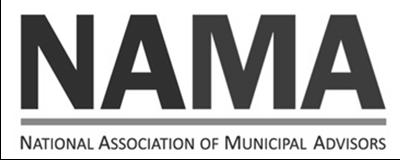
WESTERN REG ION
Kelly Lathan, Financial Analyst 5 North Avenue LeRoy, New York 14482 (585)502-5010
NYSAC News | www.nysac.org 39
Founding firm member of the National Association of Municipal Advisors 12/19/2023
www.fiscaladvisors.com
The Best Line of Defense Against Cyber Threats

 TBy Meghan Cook, Director, Cyber Incident Response Team, Office of Counter Terrorism, NYS DHSES
Noor Gravelle, Information Technology Specialist 4, Cyber Incident Response Team, Office of Counter Terrorism, NYS DHSES
TBy Meghan Cook, Director, Cyber Incident Response Team, Office of Counter Terrorism, NYS DHSES
Noor Gravelle, Information Technology Specialist 4, Cyber Incident Response Team, Office of Counter Terrorism, NYS DHSES
echnology is embedded into every aspect of local government, and it’s hard to identify any local function not supported by Information Technology (IT). It is because of this reliance on IT that local leaders are fortifying their government’s cyber maturity.
Historically, cybersecurity has been left to the IT professionals, but that perspective has decidedly changed over the last several years. The 2022 Nationwide Cybersecurity Review from the Center for Internet Security (CIS) revealed that state and local governments experienced 148% more malware attacks and 51% more ransomware incidents during the first eight months of 2023, compared with the same period in 2022. Considering these alarming rates, local officials, executives, and department heads are taking a more proactive approach to cyber risk management.
Malware is one of the most common forms of cyber-attacks. Malware is malicious software designed to disrupt, damage, or take over a computer system. Ransomware is one of the most common forms of malware and it is a tool that cyber criminals use to steal your data and hold it hostage, asking you for large amounts of money to get it back. Many times, these attacks start with a fake email that looks real (called phishing). A phishing email is what it sounds like: an attempt to lure a victim into providing details like username, password, and account information so a threat actor can obtain access and move about your IT environment.
Building cyber resiliency
It is important for local leaders to have a framework to understand how to make their government resilient to cyberattack. The CIS’s “18 Critical Controls” is an industry standard and, while it was designed to guide cyber professionals in assessing and hardening their environment, it is also a great way for local officials and executives to gain an appreciation of the range of measures they need to take to build cyber maturity. Using the 18 critical control categories to structure a discussion among local officials, IT and cyber professionals can further understanding of your organization’s current security baseline.

www.cisecurity.org/controls/cis-controls-list
For those local governments that think the 18 critical controls are too advanced for them right now, there are several technical best practices that can be put in place to significantly protect against threat actors. Although it must be noted that the 18 critical controls should not be abandoned, they might not be the most appropriate place to start for some local governments. In this case, a short list of best practices includes:
IMPLEMENT MULTI-FACTOR AUTHENTICATION (MFA)
MFA is a way to verify the identity of anyone doing work associated with an organization, such as employees, contractors, temps, or interns (a “workforce member”) when they access any government asset. MFA requires more than a username and password and brings another layer of protection.
SECURE EMAIL COMMUNICATION
Business email compromise is one of the most common ways a threat actor gains access to a network. All employees can benefit from phishing training where they would learn to look for and recognize signs of phishing such as spelling errors, suspicious links or attachments and urgent requests for personal information.
40 NYSAC News | Spring/Summer 2024
Patch management is the process of identifying, testing, and applying software updates. Patch management serves as a proactive defense mechanism against vulnerabilities. While patching is typically done by the IT and cyber staff, having all staff pay attention and react appropriately to “update” prompts is important.
HAVE A BACK-UP STRATEGY
Every IT and cyber leader should be able to talk about the organization’s back up strategy as well as communicate what continued investments are necessary. Back up strategies should include frequency, mechanism (e.g., on site, cloud, immutable), and meet specific service level demands.
IMPLEMENT NETWORK SECURITY PROTECTION AND DETECTION
These are technical protections of an organization’s infrastructure including devices, applications, and network to prevent a threat actor from gaining unauthorized access.
Local leaders: the best line of defense
Throughout NYS, local leaders have had an impact in statewide cyber resiliency. As officials and executives continue to prepare their organizations, there are two efforts that have been found to yield the most return on the investment:
COMMISSION A CYBER RISK ASSESSMENT (CRA) AND MAKE INVESTMENTS BASED ON THE RESULTS
A cyber risk assessment helps a local government answer two questions 1) Are there current deficiencies associated with our technologies that could cause or increase the impact of a cybersecurity incident? And 2) Is our IT/cyber function taking appropriate steps to mitigate cybersecurity risks throughout the entire organization? Most organizations will carry out a CRA using a framework like the CIS controls. At the end of an assessment, an organization will have answers to the questions and a roadmap to prioritize cyber resiliency investments. These investments are critical to building cyber maturity.
ESTABLISH AND PRACTICE AN INCIDENT RESPONSE PLAN
A cyber incident response plan is the local government’s roadmap for when and if a cyber-attack takes place. It contains responsibilities, chain of command, communication processes (both in band and out of band), critical technology decisions, public information messaging, required notifications, contact numbers for cyber assistance, and recommended document management. After the plan is created, it must be practiced. Practicing what each person will do, how they will communicate, and the technical decisions that must be made is one of the single most effective ways to prepare for responding to an attack.
Cybersecurity investments are some of the most important local leaders will make. While threat actors continue to find new ways to access government networks, it is important that leaders empower IT, cybersecurity, and risk management professionals.
In NYS, it is local leaders who are making the difference in cyber resiliency. They continue to be the best line of defense.
NYSAC News | www.nysac.org 41 ESTABLISH A PATCH
PROCESS
MANAGEMENT
suspicious cyber activity occurs, any NYS local government can call NYS DHSES CIRT for assistance. 1-844-OCT-CIRT (1-844-628-2478)
If

42 NYSAC News | Spring/Summer 2024
Challenging Residents to Get Outdoors
 TBy Heather Miller, RN, BSN, Director of Patient Services, Chenango County Department of Health
TBy Heather Miller, RN, BSN, Director of Patient Services, Chenango County Department of Health
he Chenango County Health Department is taking a collaborative approach to addressing its community needs. Suppose you’ve reviewed the Community Health Assessment and the New York State Department of Health Behavioral Risk Factor Surveillance System for Chenango County. In that case, you will find that a lack of physical activity opportunities and obesity hinder the county. To address these obstacles, the county’s health and planning departments created the Explore Chenango Outdoor Challenge initiative.
The Obstacles
The New York State Prevention Agenda 2019-2024 has assigned local agencies with the responsibility to enhance, identify, or create programs aimed at positively impacting the lives and health of their residents. According to the New York State Department of Health, in 2016, just over 74 percent of adults residing in Chenango Couty participated in leisure-time physical activity. This percentage continued to decrease to 72 percent in 2021. This rate falls below the 2019-2024 Prevention Agenda goal of 77.4 percent. The 2022-2024 Community Health Assessment uncovered a deficiency in exercise accessibility, as reported by community survey respondents. The respondents perceive this as a barrier to fostering a healthy community and have voiced a need for affordable, realistic exercise programs that are easily accessible.
Chenango County is also an area of high concern due to the percentage of adults living with obesity. Just under 40 percent of the county’s residents are obese. This percentage has remained relatively stagnant since 2016, hovering in the mid to high 30 percentile range. Chenango County trails behind the 20192024 Prevention Agenda goal of decreasing the percentage of adults aged 18 years and older with obesity to 24 percent.
The County Landscape
Chenango County is a rural community in upstate New York. Covering an expansive 899 square miles, its landscape primarily includes rural terrain, with agriculture accounting for 35 percent and forest covering 60 percent. The county has approximately 112,000 acres, or 20 percent of state-owned land. This type of environment is ideal for its residents to utilize and explore. There are walking trails available throughout the county that are open for anyone to enjoy.
The Triumph
The Explore Chenango Outdoor Challenge is a new program that takes advantage of the county’s landscape while promoting physical activity and the associated benefits. It is a walking or hiking challenge that anyone can take part in. Participants who complete 10 of the 14 walking or hiking challenges can submit their trail log to receive a bumper sticker and be entered into a raffle for outdoor-themed prizes. It is a fun way to explore different areas in the community with family, in a group, or individually. The hikes range from easy to moderate difficulty, with the distance of individual hikes varying from as short as one mile to as long as 22 miles. The challenge includes the Greenway River Trail, Rogers Environmental Education Center, and the Stone Quarry Trail.
The Goals

In addition to the hope of increasing physical activity and decreasing obesity in Chenango County, participating in the Explore Chenango Outdoor Challenge can improve mental health by:
• Boosting mood
• Increasing self-esteem
• Promoting the formation or maintenance of positive social bonds
• Reducing symptoms of anxiety and depression
• Improving sleep
Furthermore, physical activity can lower one’s risk for the following:
• Cardiovascular disease
• Type 2 Diabetes
• Certain cancers
• Falls and injuries associated with falls.
There are many benefits to participating in the Chenango Outdoor Challenge. The aspiration is for Chenango County residents and those outside the county to improve their health while enjoying what nature offers.
NYSAC News | www.nysac.org 43


Since 2012, the program has helped over a dozen counties streamline purchases, pay bills, and earn a growing stream of revenue.
The Payment Solutions Program, which is a special type of credit card, can help ease the the purchase of supplies, furniture, construction materials, utilities and much more, all while saving staff time and money.
NO COST
Rebates on 100% of dollars spent
Reduced check writing costs
Expedited payment to vendors (24 - 48 hours)
Reduced paperwork for requisitions, purchase orders and invoices
Quick startup - program implemented 6 to 8 weeks from the receipt of application


Pay Bills • Buy Supplies • Reduce Paperwork • Earn Rebates Since ®
Consultant PFM Financial Services LLC 516.246.1210 • smithb@pfmam.com
Beth Smith Senior Managing
NYMIR NYMIR Insuring your municipality is our top priority www.NYMIR.org CUSTOMER SERVICE RISK MANAGEMENT KNOWLEDGE OF MUNICIPAL OPERATIONS NewYork State Association of Counties Since
Cracking Down on Flavored Tobacco and Vape Products
 FBy Sarah Ravenhall, NYSACHO Executive Director
FBy Sarah Ravenhall, NYSACHO Executive Director
our years ago, a measure included in New York’s final 2020-2021 state budget took a considerable step forward in protecting our communities from illness and disease by outlawing the sale of most flavored tobacco and vaping products. It was sound public health policy much sought and much applauded by the New York State Association of County Health Officials (NYSACHO).
Notwithstanding these actions, however, we have learned from many of our local health departments who enforce the sale of tobacco products that a significant number of “bad actor” retailers flout the law and continue to sell these illicit products. We have also learned that many retailers have found ways to exploit loopholes in the laws by selling in retail settings various vaping-related products that are legal only in other states or via certain online transactions. This growing lawlessness does not stop at illicit transactions and exploitation of loopholes. We are deeply troubled to hear from many regions of the state that a number of retailers use threats of violence and intimidation to prevent authorized public health inspectors from entering their establishments and conducting lawful compliance inspections. This behavior is as remarkable as it is unacceptable.
Considering these behaviors, it's become clear that we need new, stronger laws to afford better protections against illness and disease (especially for young people who are the primary targets for these deadly products), and better protections for our public health workforce who are civil servants working every day to protect the health and wellbeing of our communities.
Some local health departments, such as Rensselaer County, led by Director Mary Fran Wachunas and Suffolk County, led by Dr. Gregson Pigott, have independently initiated successful partnership response efforts with their local Sheriff’s Department to collaboratively address these issues by seizing products and conducting education, which provides a good model. However, a statewide solution is critically needed.
To that end, legislation proposed by Assemblymember Linda Rosenthal and Senator Brad Hoylman-Sigal (A.9110/S.8531) would address these concerns by prohibiting the storage, processing, packaging and distribution of flavored vaping products near any location where vaping or tobacco products are sold, and imposing significant fines against
retailers who fail to allow their locations to be inspected for compliance.
The proposed legislation would also provide stronger enforcement options concerning the unauthorized sale of flavored e-cigarette products, including suspending, revoking, or canceling a vaping product dealer’s certificate of registration; canceling all such certificates of registration the dealer may hold in the state after three violations in a five-year period; and enhancing record retention requirements.
The personal and societal impact of these products is no small matter. E-cigarette use (vaping) during adolescence puts young people at risk of incomplete lung development and can inhibit their ability to reach full respiratory potential. Previous state laws have had some success in reducing the prevalence of e-cigarette use among youth aged 18 and under, with a decline from 27.4 percent to 18.7 percent between 2018 and 2022, according to State Health Department statistics. Nevertheless, rates of youth e-cigarette usage in New York are still above the national average of 10 percent.
Many retailers who sell tobacco and e-cigarettes work continuously to find novel ways to make these products available to our young people, including measures as extreme as installing false walls to hide products from inspection, hiding products in back stock rooms or in cars in the parking lot adjacent to the shops. Even more concerning is that some of these retailers are also selling unregulated cannabis, synthetic cannabinoids, and on occasion, opioids or fentanyl.
We must remain vigilant to ensure our laws and policies keep pace with their maneuvers. Together, we must protect our young people and future generations from the tobacco and vaping industry’s harmful marketing strategies and highly addictive and hazardous products. The proposed legislation would provide a critical additional step toward strengthening New York’s ability to ensure these harmful products stay out of the hands of our youth.
As the organization representing all 58 local and county health departments in the State of New York, NYSACHO implores the State Legislature to quickly pass this legislation and send it to Gov. Kathy Hochul for signature into law.
46 NYSAC News | Spring/Summer 2024







NYSAC News | www.nysac.org 47 Your Success & More. We deliver a full spectrum of services curated to meet your unique needs: • Assurance • Tax • Small Business Advisory • Advisory & Consulting The Bonadio Group is committed to paving the way for a new era of public accounting and advisory services. Connect with us: 877.917.3077 bonadio.com ALBANY BUFFALO ELMIRA GARDEN CITY MELVILLE NEW YORK CITY ROCHESTER SARATOGA SPRINGS SYRACUSE UTICA WESTCHESTER One Lincoln Center, Syracuse, NY 13202 • 315.218.8000 • BSK.COM Bond serves 150 municipal entities in New York State in areas such as: • environmental and energy • labor and employment • litigation • municipal law • public finance • tax assessment, condemnation and property valuation • zoning and planning
58th Annual NYSAC County Finance School
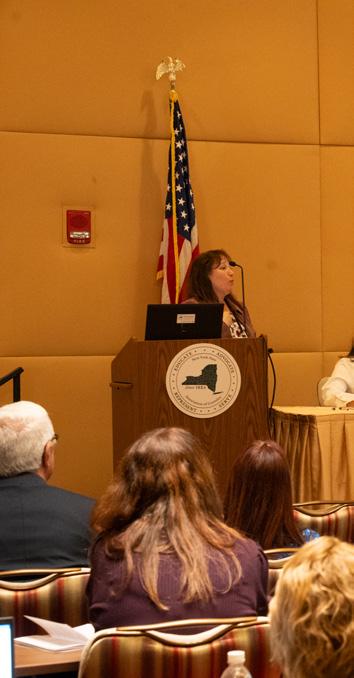
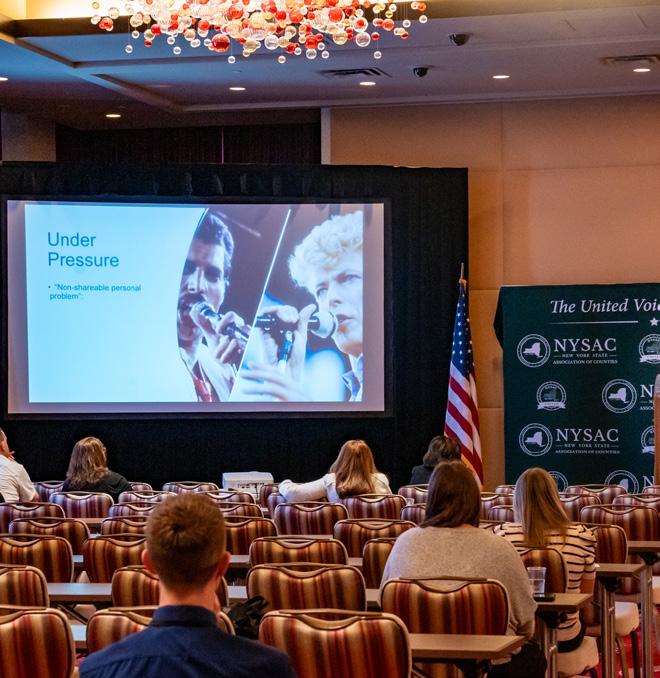
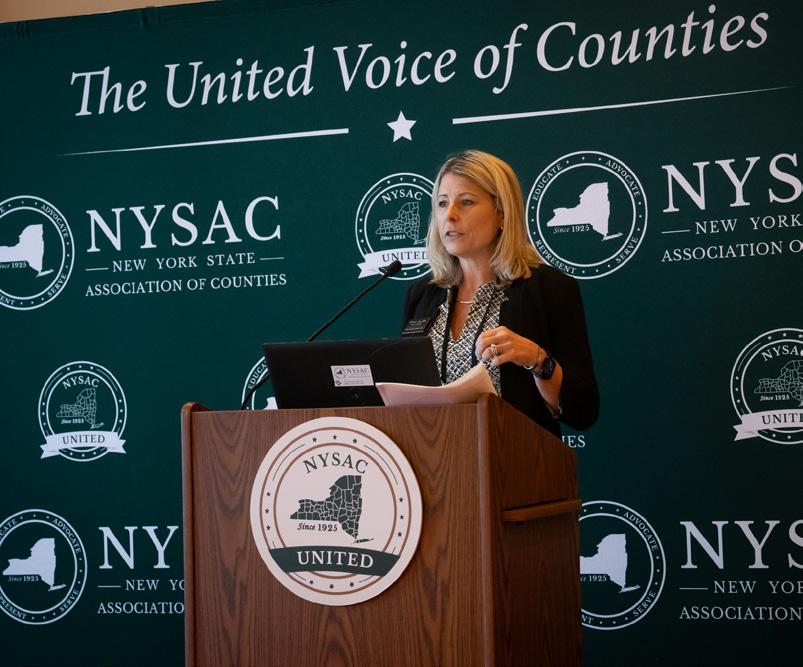


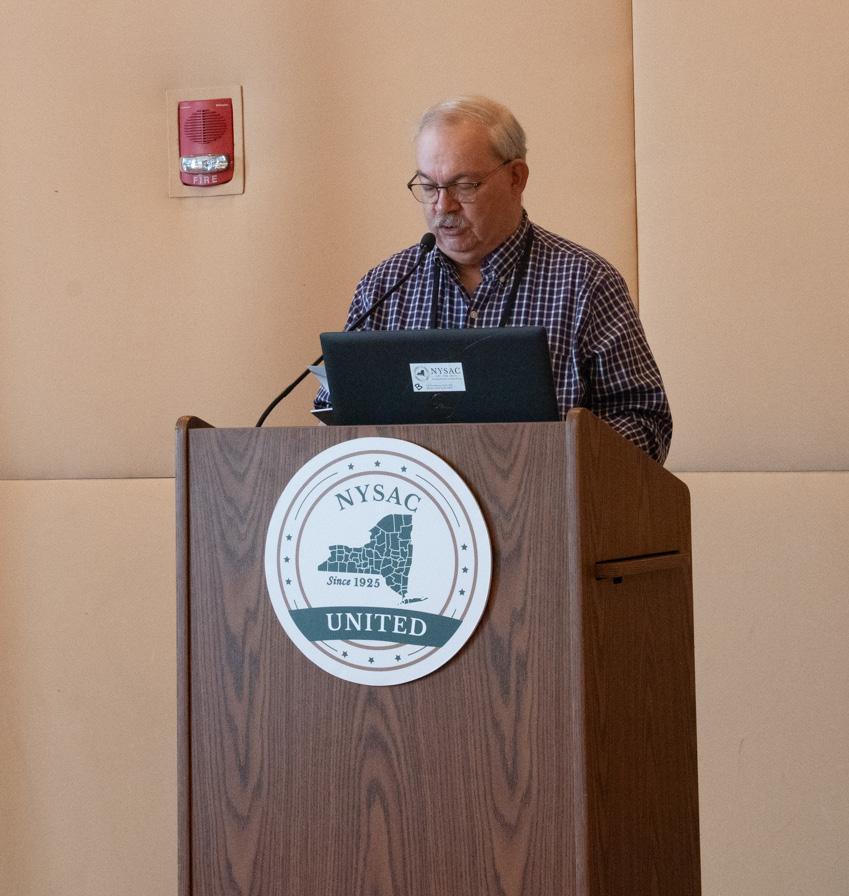
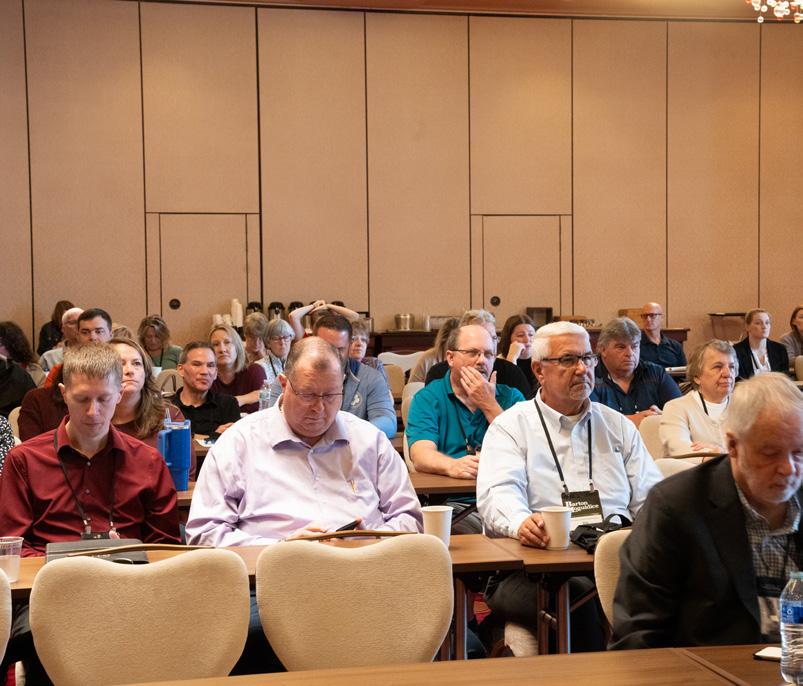



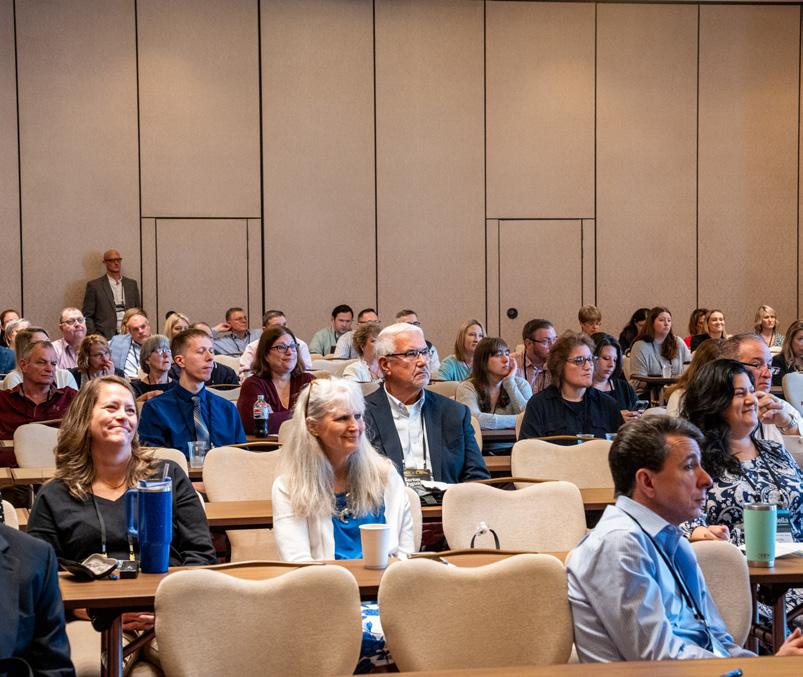
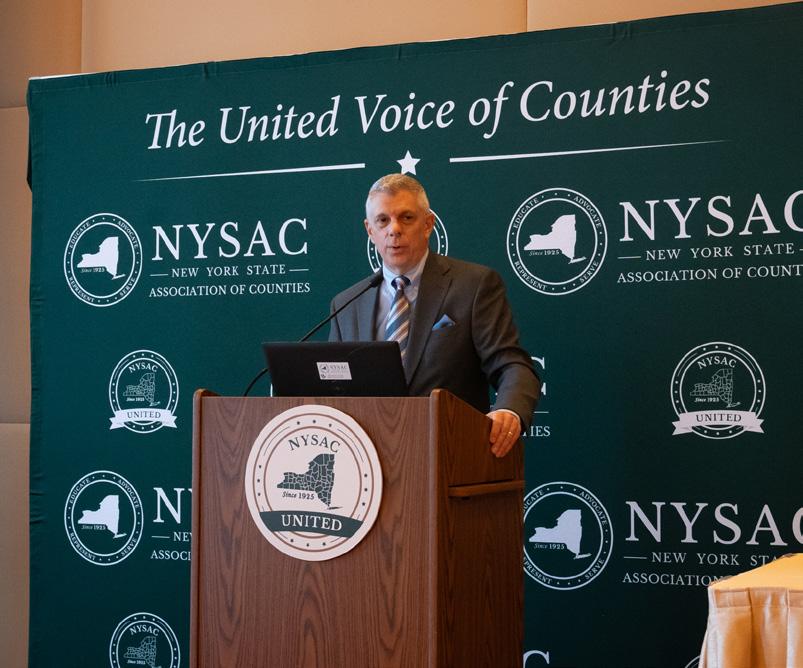


For the first time in its 58 year history, the County Finance School came to Oneida County for three days of professional development, continuing education, and networking at the Turning Stone Resort.
Thank you to Oneida County Executive Anthony Picente for hosting us, and to the Office of the State Comptroller, the NYS Treasurers and Finance Officers Association, and county officials who helped make the 58th annual County Finance School a tremendous success!
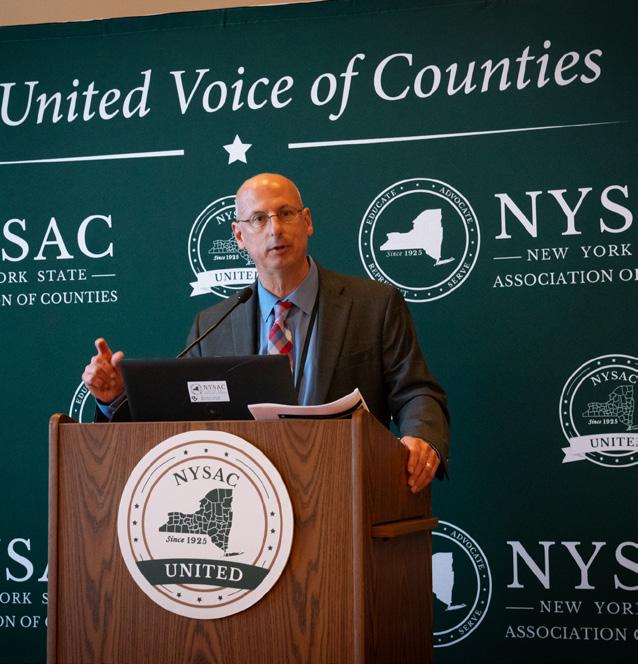


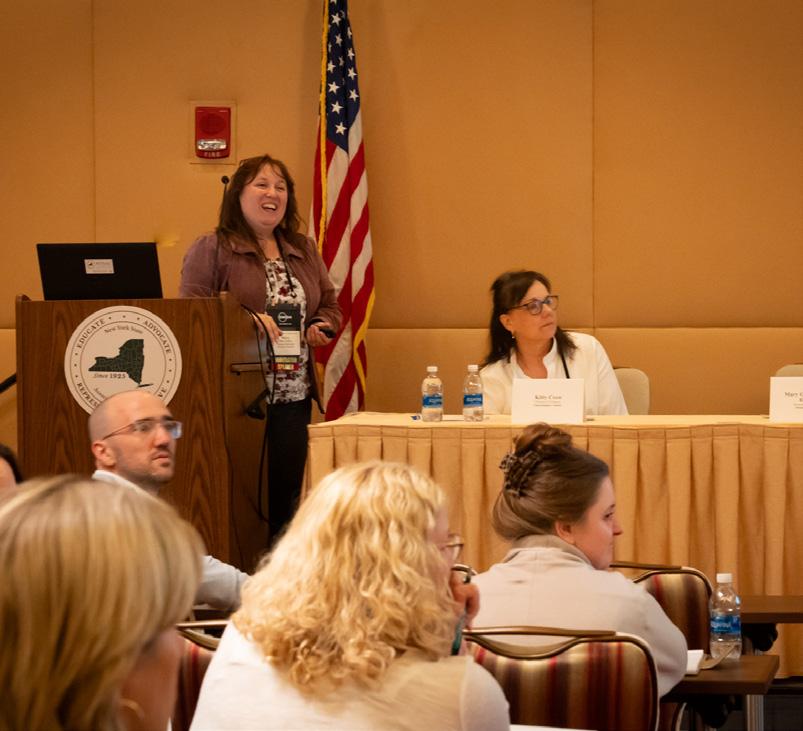
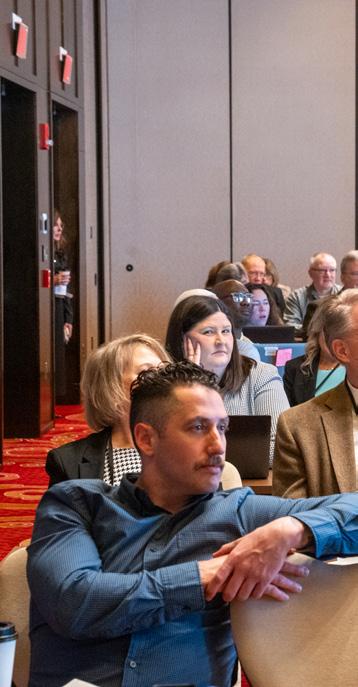
NYSAC News | www.nysac.org 49

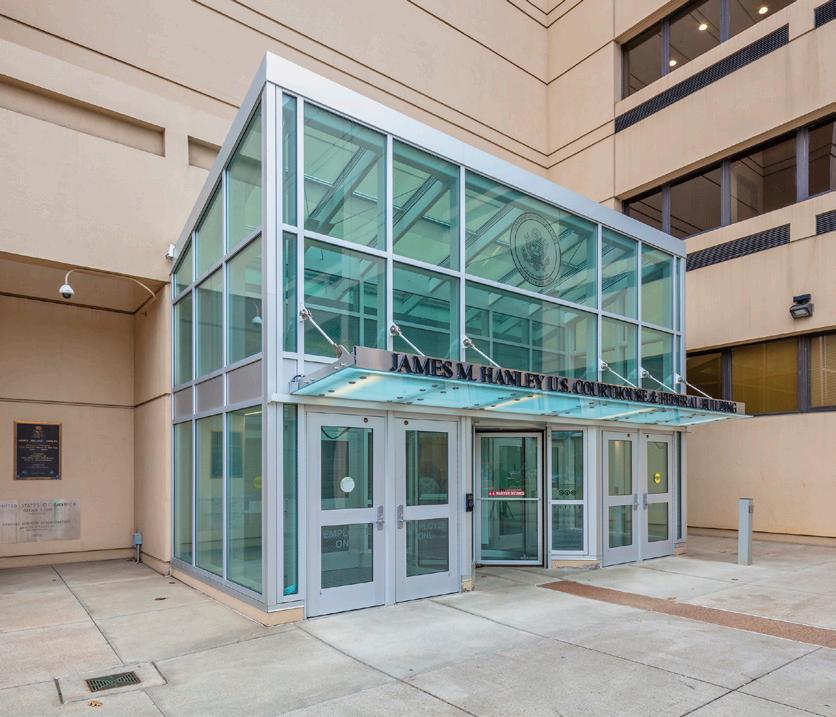



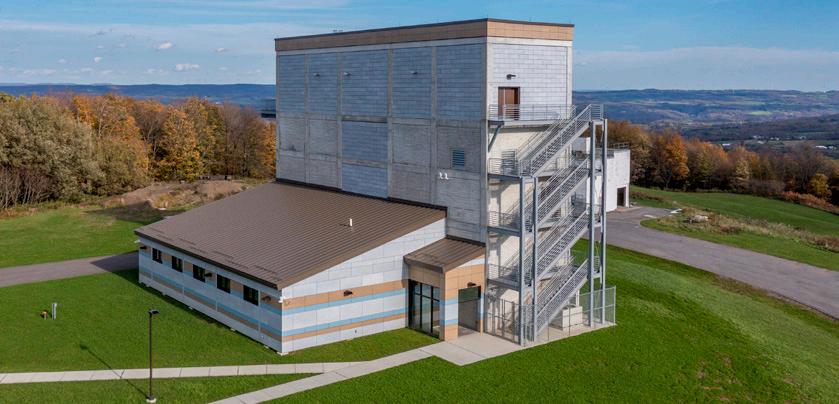




UNIQUE RESULTS. www.nkbpc.com | 315.428.1177
UNRIVALED SERVICE.
Operation Errands
Warren County Offices for Aging and Veterans’ Services Team Up on Senior Van Service
 By Don Lehman, Director of Public Affairs for Warren County
By Don Lehman, Director of Public Affairs for Warren County
Two Warren County agencies have teamed up to ensure that senior citizens in northern and western Warren County can safely get to and from grocery shopping, visits to pharmacies and other essential errands.
Warren/Hamilton Counties Office for the Aging and Warren County Veterans’ Services have teamed up to start a new senior transportation program that will provide those over the age of 60 and military veterans of any age free shuttle bus transportation for errands in the more populated Glens Falls/ Queensbury area. The service began on January 2nd of this year.
A private contractor provided senior shuttle service in western and northern Warren County towns for a number of years, but the company halted its operation at the end of 2022 with little notice to the affected communities and residents. When this private service abruptly ended, Deanna Park, Director of Warren Hamilton Counties Office for the Aging, said her office heard from many seniors who valued the service, so they began looking into ways to replace it.
"Transportation is of vital importance to our seniors in rural Warren County and we believe this new program will help seniors remain in their homes,” Deanna Park explained.
When Denise DiResta, Director of Warren County Veterans’ Services, learned of the transportation interruption, she offered the use of vans her agency operates for veterans medical appointments when they aren’t in use transporting veterans. The veterans vans are used to conduct trips to Stratton VA Medical Center in Albany, but based on those schedules, the vans and part-time drivers are available to operate the vehicles for senior transportation on off days as well.
“When I heard that the senior van service ended, I thought it was important that we do everything we can to resume this service for our seniors, many of them being veterans themselves. We were glad to be able to help,” said DiResta.
The bus service is for those 60 and over, and operates in the towns of Warrensburg, Bolton, Chester, Horicon, Johnsburg, Thurman, Stony Creek and Hague. (Senior residents in southern Warren County communities currently have access to municipally or privately operated transportation services.)

Seniors simply fill out a one-time registration form during their first trip and are picked up and dropped off at their homes, with service in each community twice a month.
Kevin Geraghty, Warrensburg Town Supervisor and Chairman of the Warren County Board of Supervisors said, “We are very pleased that our Office for the Aging and Veterans Services’ staff stepped up to start this service. The senior transportation program being discontinued last year has been a big issue for residents of northern towns in Warren County. This service is very important for seniors who can’t drive or don’t have other transportation options.”

NYSAC News | www.nysac.org 51
New York's Landmark Voting Rights Act
What You Need to Know

 IBy Misha Tseytlin, Partner at Troutman Pepper and Carson Cox, Associate at Troutman Pepper
IBy Misha Tseytlin, Partner at Troutman Pepper and Carson Cox, Associate at Troutman Pepper
n 2022, New York passed the John R. Lewis New York Voting Rights Act (“NYVRA” or the “Act”), imposing new state-law restraints on all political subdivisions and local boards of elections’ provisions and practices affecting voting, election administration, and redistricting. Among other requirements, the Act requires political subdivisions to comply with new standards when proposing a plan of districting or redistricting. Notably, certain entities will also be subject to the Act’s “preclearance” provision, which takes effect on September 22, 2024, requiring pre-approval for many policy changes. Violations of the Act can result in expansive remedial orders and mandatory attorney’s fees and costs awards.
Substantive Requirements
The NYVRA introduces specific state-level prohibitions and requirements regarding voting practices and procedures. Namely, the Act prohibits the enactment or application of voting practices or procedures that result in a denial or abridgement of the right of members of a protected class to vote. This includes any method of election that impairs the ability of members of a protected class to elect candidates of their choice or influence the outcome of elections. A protected class is broadly defined
to include any class of eligible voters who are members of a race, color, or language-minority group.
The NYVRA imposes additional requirements affecting redistricting. Procedurally, political subdivisions must hold at least two public hearings over 30 days or less before implementing a new or revised districting plan. The Act also mandates that political subdivisions meet certain substantive standards when drawing their redistricting plans. These standards, which should be read in conjunction with federal requirements, set forth additional district population characteristics that political subdivisions must now consider. This requirement is largely designed to avoid racial or partisan gerrymandering.
Preclearance Requirement
Pursuant to the NYVRA's "preclearance" requirement, certain political subdivisions and local boards of elections must submit election- and voting-related changes for review before they can take effect. This requirement applies to a "covered entity" when it makes a change to election law that qualifies as a "covered policy." The New York Attorney General (NYAG) recently issued preliminary guidance on this specific section of the NYVRA, which separately takes effect later this year.
52 NYSAC News | Spring/Summer 2024
Procedural Provisions
The NYVRA imposes a mandatory notification requirement on plaintiffs who intend to file a lawsuit under the Act and contains a safe harbor provision to give political subdivisions an opportunity to remedy any potential violations. After sending a notification letter, the potential plaintiff must wait 50 days before filing suit. During this time, the entity can pass an “NYVRA resolution” affirming its intent to implement a remedy for any potential violation. If the entity passes such a resolution, the NYVRA’s “safe harbor” provision gives the entity an additional 90-day period to enact and implement such a remedy.
Enforcement and Remedies
The NYVRA’s provisions are subject to both public and private enforcement. The NYAG has direct authority to file suit, issue subpoenas, and conduct investigations to enforce any provision of the Act. The Act also authorizes suits by individual aggrieved persons, classes of such persons, or an organization whose members are aggrieved persons or whose mission is to ensure voting access to minorities. The Act permits a broad range of remedial measures and allows the prevailing plaintiff party to recover attorney’s fees and litigation expenses.
Why It Matters
It is important for all New York political subdivisions and local boards of elections to familiarize themselves with the NYVRA and seek guidance to ensure their compliance with the Act’s new requirements. The Act affects all political subdivisions in the state in some respects—those subject to preclearance requirement even more so—and applies to a host of current and proposed laws affecting voting, election administration, and redistricting. Moreover, the Act is already being enforced, NYVRA suits can be very costly to defend, and can result in mandatory attorneys’ fees awards in addition to having to comply with burdensome remedial orders.


Accordingly, New York entities should closely review the NYVRA’s provisions and the NYAG’s guidance, familiarize themselves with the new procedures, and monitor ongoing cases involving alleged NYVRA violations. Doing so may be necessary to avoid a potential NYVRA lawsuit, to be properly prepared to respond to an NYVRA notification letter, and to help assess whether they will be subject to the Act’s soon-to-beeffective preclearance requirement.
For a more extensive analysis of the NYVRA, please visit troutman.com/nyvra-overview.
NYSAC News | www.nysac.org 53
Solar for Counties A Q&A with the New York Power Authority
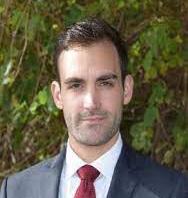 IBy Benjamin Cuozzo, Director DER Advisory Services at the New York Power Authority
IBy Benjamin Cuozzo, Director DER Advisory Services at the New York Power Authority
n the ongoing pursuit of a sustainable future, counties play a pivotal role in driving New York State’s progress toward meeting its clean energy goals. But in this rapidly evolving landscape, it can be challenging to know where and how to invest county resources.
As a leader in power and clean energy solutions, NYPA has extensive experience working with counties on a wide range of renewable energy projects. Through the course of that work, we’ve encountered several key questions related to solar energy that may be useful as you consider your own projects.
Q1. Why should I consider solar?
Solar and storage can provide a key pathway to achieving your local government’s decarbonization goals. It can provide the opportunity to leverage underutilized spaces—such as landfills and brownfields—to generate revenue, create bill credits, achieve cost savings, reach sustainability goals, and improve grid resiliency. However, it is also a rapidly evolving and complex marketplace with numerous competing developers and technologies. Your organization will need to make important decisions between on-site or off-site renewables, how to structure project agreements, and how to share the benefits.
Q2. What is the first thing I should consider when thinking about a solar project?
First, you should consider what you want to achieve with your solar transition. Solar and storage can support your sustainability, reliability, and economic goals. From here, you should think about the space you have available and how feasible it might be to install solar on that space.
Next, you’ll need to think about the potential economic impact and balance the cost of the array against your existing energy needs, available incentives, and energy credits or direct savings that you can achieve through solar energy.
The decision to go solar also includes the selection of implementation contractors, equipment manufacturers, and negotiation of project costs.
The process is complex and it can help to partner with experts to assist in navigating the complex market environment, develop feasibility assessments and establish a cost-benefit analysis, and procure the right service provider for your project.

54 NYSAC News | Spring/Summer 2024
Q3. I understand that I can use vacant space—like landfills, brownfields, and parking lots – to earn revenue and offset energy costs. Can you explain how that might work?
Solar and storage can be a great way to utilize vacant or predisturbed space. You can build solar on-site to either offset your energy costs or access credits on your energy bill. With Community Distributed Generation (CDG), you can lease large parcels of land, like landfills, brownfields, and parking lots, to developers who then install and maintain the solar panels. You can also use up to 40% of this power, and the developer sells the remaining power to the community. In addition to bringing a renewable energy source to your local government, you and the community solar participants get credits on your utility bills.
Q4. How can I drive cost savings through solar?
Depending on the interconnection, which is how the solar project is connected to the distribution system, the energy generated would either be a) used by you directly to offset your energy costs, or b) injected into the grid, where you would receive bill credits (VDER) from the utility. Behind the meter (BTM) and Front of the meter (FTM) describe the location of the solar array in relation to the point of interconnection with the electric grid.
Behind the meter refers to a system that is installed on a property and provides electricity mainly to that property. The power generated by this system is mainly used on-site by the property owner to offset their own electricity usage from the grid which can result in reduced utility bills.
Front of the meter refers to a system that is installed on the site, but that distributes its energy into the electric grid to the utility. The electricity is sold to utilities or other customers. The customer gets VDER credits on utility bills for exported energy.
Q5. I’m interested in bringing solar energy to my organization, but I
don’t have space to develop on-site solar.
If you don’t have space to develop on-site solar, you might consider being an offtaker of a community distributed generation or remote crediting project. Your organization would then receive bill credits (VDER) on your electric utility bills.
We hope this Q&A provides some information on how to think about solar and storage or community solar for your local government. You can contact NYPA to learn more about how solar and storage can help your local government reach its decarbonization goals at www.nypa.gov/solar.

INNOVATIVE STRATEGIES FOR RESILIENT , PREPARED COMMUNITIES
For four decades, IEM’s team of nationally recognized emergency management, disaster recovery, crisis response, housing, & public health leaders continue to apply their expertise & experience to help communities create a safe, secure & resilient future
IEM SPECIALIZES IN:
• Emergency Preparedness
• Mitigation & Resilience
• Disaster Response & Recovery
• Humanitarian Support
• Grants Planning, Administration & Management
• Public Health
• Digital Services
IEM manages a broad portfolio of government contract vehicles to provide our clients with fast, flexible channels to access the full range of IEM’s consulting services. To learn more about how we can help support your community, contact David Andrews, Director of International Homeland Security at David.Andrews@iem.com. www.iem.com
NYSAC News | www.nysac.org 55

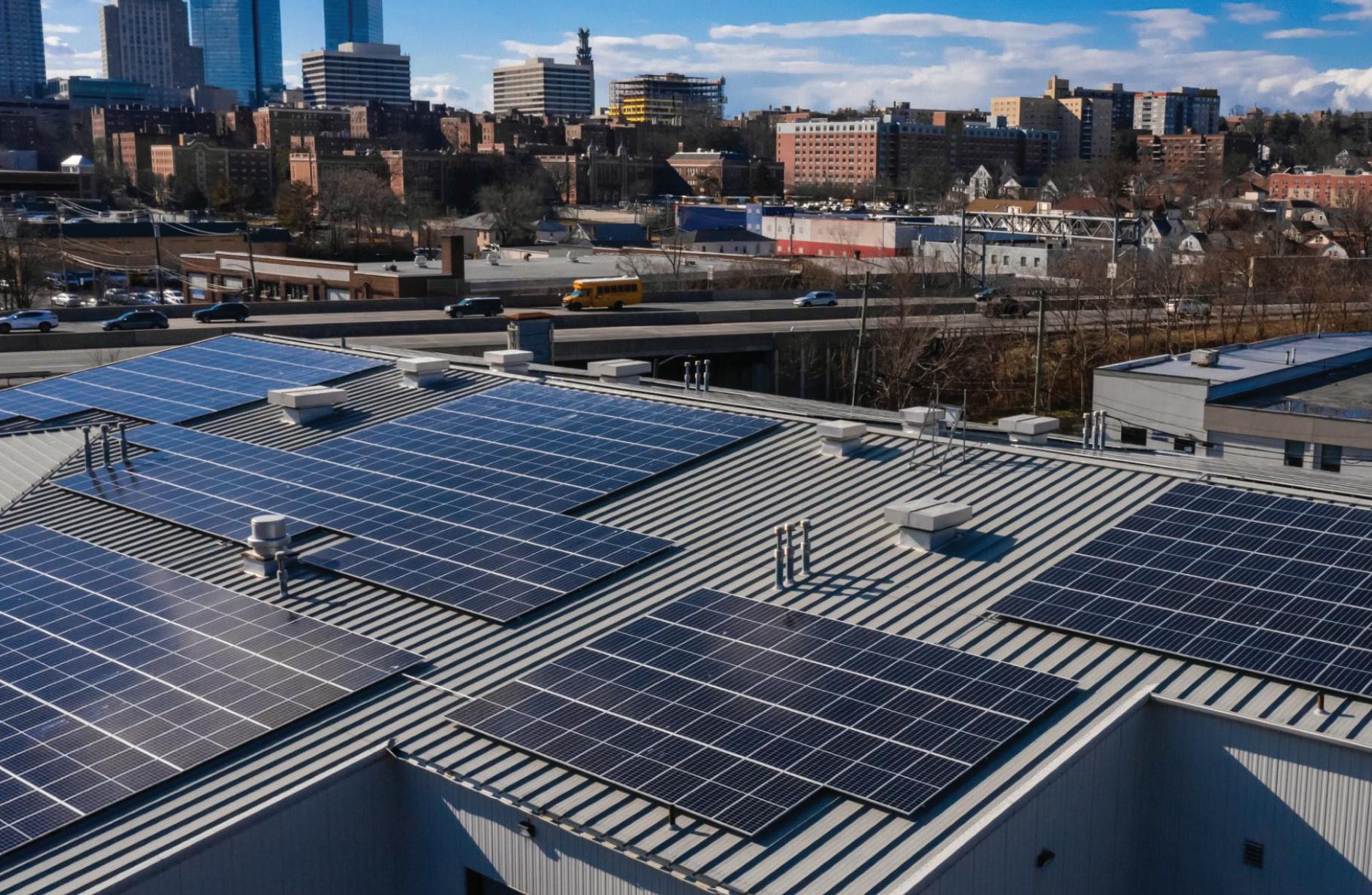
New York State Reaches for the Sun.
New York is leading the fight against climate change. There are ambitious goals: by 2030, 70% of the state’s electricity will be generated by renewable energy. From sunrise in Montauk to sunset in Buffalo, NYPA is working to build a cleaner, greener, more resilient New York State.
Solar and Storage for Local Governments
NYPA’s solar and storage provides a key pathway to achieving your decarbonization goals. From Montauk to Buffalo, we support local governments navigating the complex energy environment to find the best solution for your municipality or county.
Our energy experts can simplify your solar transition by helping you:
• Streamline the procurement, contracting, and interconnection process;
• Leverage underutilized spaces such as brownfields, landfills, fields, and parking garages; and,
• Access bill credits, reduce energy costs and generate additional revenue.
You can also bring cost savings to the surrounding community with community solar.
In other words, when you work with NYPA on your solar transition, you can pretty much handle anything under the sun.
56 NYSAC News | Spring/Summer 2024
The New York Power Authority (NYPA) is a leader in power programs and clean energy solutions. We offer advisory, implementation and energy management services in areas including energy efficiency, solar, energy storage, LED streetlighting and fleet electrification — NYPA’s experts help you make the right decisions to achieve your energy goals and save money. A Program of the New York Power Authority Find out if solar is right for you. solarenergy@nypa.gov
8:02 PM - SKANEATELES, NY
The Case for Converting to a District Court System
 OBy Joseph V. Cardone, Orleans County District Attorney
OBy Joseph V. Cardone, Orleans County District Attorney
ver the last three decades Orleans County has been the leader statewide in local court reform. With a population of about 40,000 people and geographically small, Orleans County was the first county to seek greater efficiency in its court system through consolidation and dissolution. Starting in 1995, town and county government began looking at various mechanisms in the law to reduce the number of local judges. That year, there were 24 Town and Village Justices in Orleans County. As of 2020, that number has been reduced to 12.
Under the New York State Uniform Justice Court Act Section 106(a), the law permits contiguous townships after a referendum to reduce from two town justices to one in each township. Through the cooperative efforts of county and town government, starting in about 2005, Orleans County began consolidating the courts of neighboring townships. This process received overwhelming support from the public with nearly 80 percent voting in favor. The only real opposition was from court staff and members of the Magistrates Association. In addition to this process, discussions were had with our two main villages, Medina and Albion. An agreement was reached with both villages to dissolve their Village Courts and have the appropriate Town Court handle those cases. With both courts operating at a financial deficit, there was little opposition to the termination of the Village Courts.
Orleans County has now operated with a reduced number of Town Judges for ten years, and we have realized many efficiencies and an improved justice system. We have found that even with half as many judges, handling case volumes has not been a problem and the magistrates support the system we have.
Orleans County now seeks to take court reform to the next level by establishing a District Court System. District Courts are permitted to replace Justice Courts pursuant to Article 6, Section 16 of the New York State Constitution. Once a District Court is established in a county, a township can terminate a Justice Court pursuant to Article 6, Section 17 of the State Constitution. Under state law, there is both a Justice Court Act and District Court Act. Since the early 1960s only Nassau and Suffolk Counties have operated with a District Court System.
Many reports and studies have been done by the Office of Court Administration, the New York State Bar, and other entities to examine the merits of establishing District Courts as an alternative to the current Justice Court system now in place. In many regards, District Courts make great sense for smaller upstate counties.
Some of the significant advantages of having a District Court System is that the law requires District Court Judges to be lawyers. Currently across the state only a third of the Town Justices are attorneys, which is often a criticism, and at a time when our laws, particularly regarding bail and discovery, have become more complicated, attorney judges make a great deal of sense.
District Courts are full-time courts and provide the public with greater access, particularly for the payment of fines and filing documents, which the part-time Justice Courts currently are unable to do. Arraignments can be done at the beginning and end of each day without Judges having to be called out at night or operate under the expensive and awkward CAP Court system. The monetary limit for pursuing money judgments in District Courts is $15,000 dollars; substantially above the $3,000 limit in Justice Courts.
Another distinct advantage is that all staff in District Courts are employees of the Office of Court Administration (OCA). OCA provides security, which is often a difficult and costly proposition for Town Courts. District Court facilities must meet the strict guidelines of OCA and are better able to accommodate trials and other legal proceedings which Town Court facilities often lack the capacity to do properly.
Orleans County is conducting public hearings with the goal of a countywide referendum to establish a District CourtSsystem this November. A website has been established at https:// www.orleanscountyny.gov/departments/court_and_law/ district_court_committee.php which contains our entire Orleans County District Court Study and Plan as well as many other valuable resources for those interested in pursuing court reform in their county.
NYSAC News | www.nysac.org 57
New York Takes Action Against Food Waste
 IBy Lorenzo Macaluso, Chief Growth Officer, Center for EcoTechnology
IBy Lorenzo Macaluso, Chief Growth Officer, Center for EcoTechnology
n New York, a staggering 3.25 million tons of food is wasted annually, and according to ReFED’s Insights Engine, the state spent $8 billion in 2022 landfilling 40 percent of its wasted food. This occurs while approximately one in four adults (24.9 percent) in New York State experience food insecurity according to a recent report by the State Department of Health. New York municipalities play an important role in managing wasted food, and CET's free, customized assistance through the Rethink Food Waste NY program can help support and implement effective strategies to reduce food waste and enhance sustainability efforts.
New York State implemented the Food Donation and Food Scraps Recycling Law on January 1, 2022. This legislation was crafted with the dual purpose of addressing food insecurity and curbing environmental degradation caused by excessive food waste. The law applies to large generators of food scraps, such as restaurants, grocery stores, hotels, and institutions, requiring them to redirect edible food to those in need and recycle remaining food scraps at organics recycling facilities.
Additionally, Executive Order 22 (EO22) directs state agencies to adopt sustainability and decarbonization programs, embodying a commitment to combat climate change and promote environmental stewardship.
To support municipalities and businesses with these endeavors, Rethink Food Waste New York, funded by the New York State Department of Environmental Conservation (DEC) and delivered under contract by CET, provides wasted food solutions at no cost.
Assistance is available for municipalities, businesses, and institutions in the state looking to expand organics collection, as well as support for haulers, depackagers, and compost sites. This holistic approach ensures that every aspect of food production and consumption is addressed, from generation to disposal. CET’s wasted food solutions are based on the EPA’s Wasted Food Scale (pictured).
Assistance involves a site visit to understand each business's unique operations and tailored recommendations, providing guidance that results in both cost savings and enhanced operations. By reducing disposal costs, conserving resources in food production and transport, and optimizing operational
efficiencies, businesses and towns may not only see cost-savings but have an extraordinary environmental impact. Rotting food in landfills generates methane, a greenhouse gas that is 28 times more potent than carbon dioxide.
Efforts to reduce, recover, and recycle food waste can help mitigate environmental impacts, conserve resources, and support more sustainable waste management practices. By leveraging CET's 20+ years of experience implementing wasted food solutions, municipal leaders can devise and execute impactful initiatives that not only reduce food waste but also foster a more resilient and environmentally conscious community. Together, municipalities stand poised to make significant strides in addressing food insecurity and environmental concerns, ensuring a brighter future for all residents.
If you are interested in reducing food waste with CET’s support or would like to learn more about our Compost Site Operators Workshop this fall, contact us at rethinkfoodwasteny@cetonline. org, 866-306-0911 or visit cetonline.org/nywasteassistance.
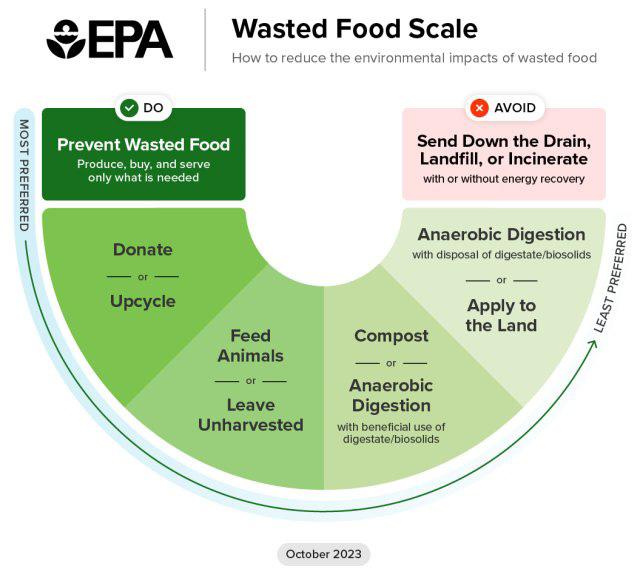
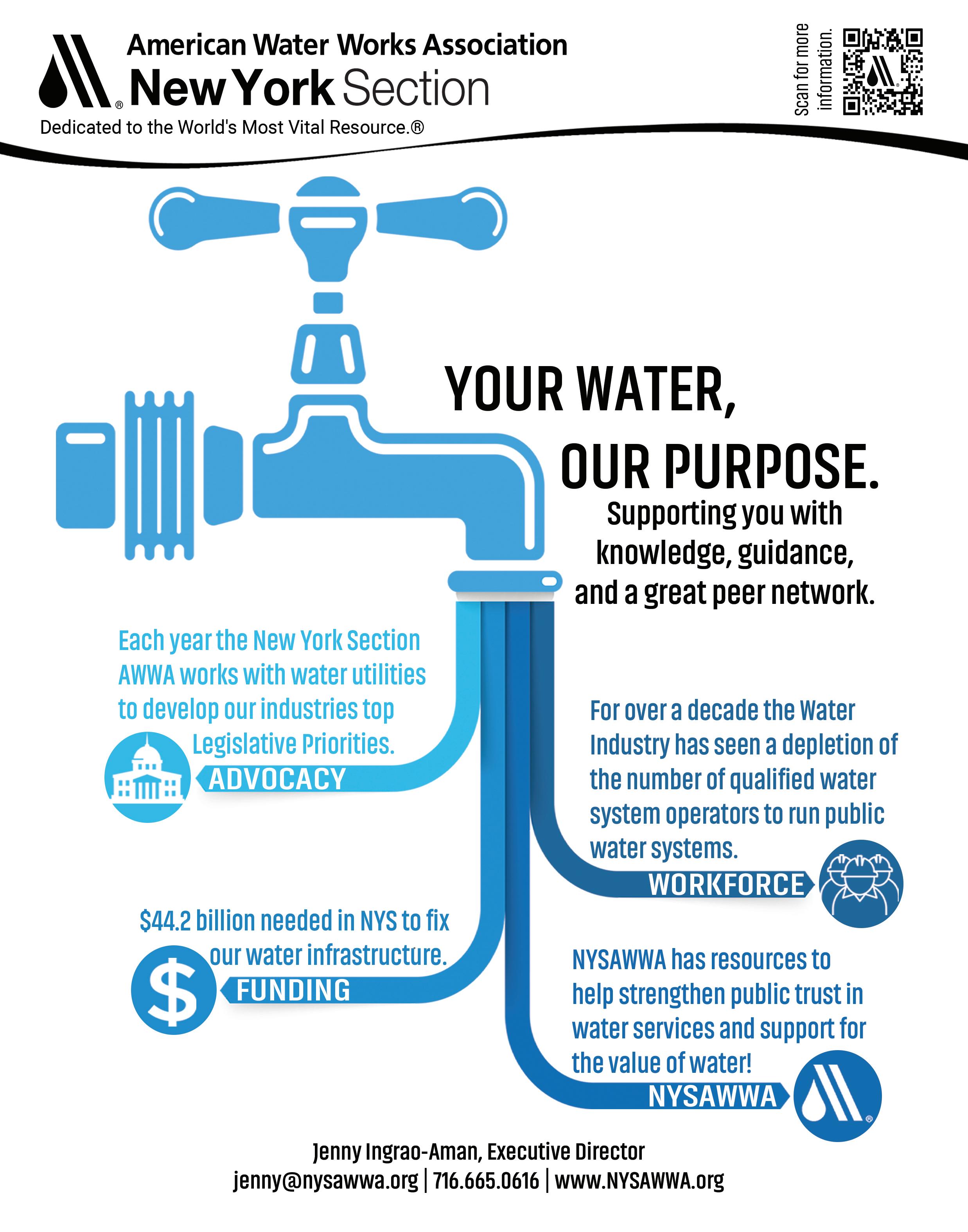

515 Broadway, Suite 402 Albany, NY 12207
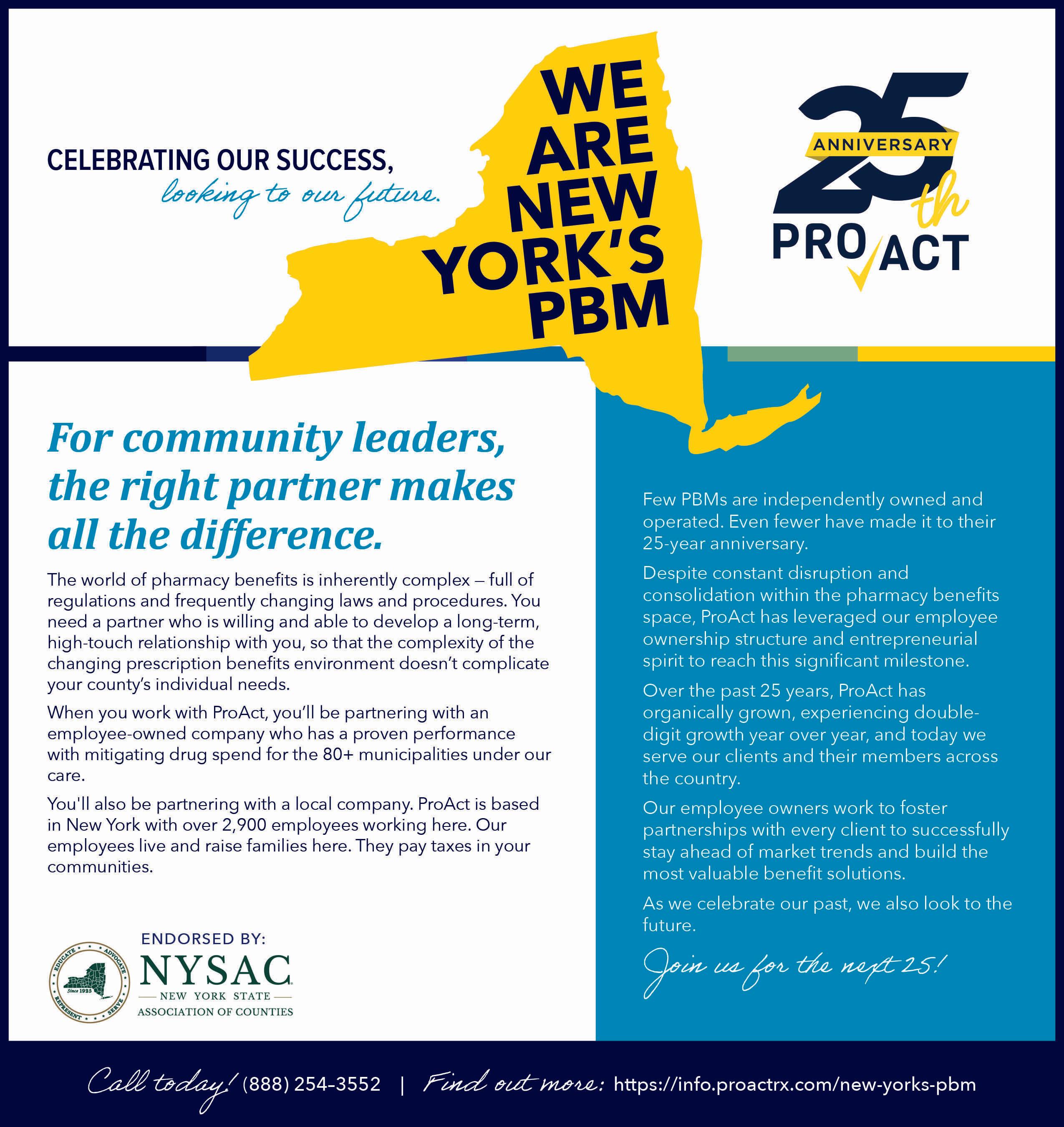
PRSRT STD U.S. POSTAGE PAID ALBANY, NY PERMIT # 695


















 Daniel P. McCoy NYSAC President
Daniel P. McCoy NYSAC President



 Stephen J. Acquario, Esq. NYSAC Executive Director
Stephen J. Acquario, Esq. NYSAC Executive Director



 By Dave Lucas, NYSAC Director of Finance and Intergovernmental Affairs
By Dave Lucas, NYSAC Director of Finance and Intergovernmental Affairs
















 HBy Ed Romaine, Suffolk County Executive
HBy Ed Romaine, Suffolk County Executive
 WBy Rachel Pierce, Oswego County Director of Workforce Development, Executive Director of the Workforce Development Board of Oswego County
WBy Rachel Pierce, Oswego County Director of Workforce Development, Executive Director of the Workforce Development Board of Oswego County





 Allegany County
Clinton County
Oneida County
Otsego County
Schoharie County
Sunset in Andover
Eclipse
Sylvan Beach
National Baseball Hall of Fame at Night
Vroman’s Nose in Middleburgh
Photographer: Mandi Joyce-Phelps
Photographer: Molly F. Ryan
Photographer: Cameron Sanborn
Photographer: William Jay Miller
Photographer: Fred Windholz
Allegany County
Clinton County
Oneida County
Otsego County
Schoharie County
Sunset in Andover
Eclipse
Sylvan Beach
National Baseball Hall of Fame at Night
Vroman’s Nose in Middleburgh
Photographer: Mandi Joyce-Phelps
Photographer: Molly F. Ryan
Photographer: Cameron Sanborn
Photographer: William Jay Miller
Photographer: Fred Windholz
 TBy Jim Wallace, Herkimer County Administrator
TBy Jim Wallace, Herkimer County Administrator





 TBy Mark LaVigne, NYSAC Deputy Director and Executive Director of the Municipal Electric and Gas Alliance
TBy Mark LaVigne, NYSAC Deputy Director and Executive Director of the Municipal Electric and Gas Alliance





 MBy Tim Ball, Executive Vice President; Courtney Handy, Director; and Josh Bills, Manager; The Bonadio Group
MBy Tim Ball, Executive Vice President; Courtney Handy, Director; and Josh Bills, Manager; The Bonadio Group

 CBy Professors Matthew Chick, Laurel Elder, and Zachary McKenney, Co-Directors of the Hartwick Institute of Public Service and Otsego County Board of Representatives member Meg Kennedy
CBy Professors Matthew Chick, Laurel Elder, and Zachary McKenney, Co-Directors of the Hartwick Institute of Public Service and Otsego County Board of Representatives member Meg Kennedy





 TBy Matt Barron, Director of Policy & Communications, New York Public Welfare Association
TBy Matt Barron, Director of Policy & Communications, New York Public Welfare Association



 RBy Michael Orth, MSW, Community Mental Health Commissioner, Westchester County, Co-Chair for the NYS Conference of Local Mental Hygiene Directors (CLMHD) Children & Families Committee
Richelle Gregory, MEd, Director of Community Services, Clinton County, Co-Chair for the NYS Conference of Local Mental Hygiene Directors (CLMHD) Children & Families Committee
RBy Michael Orth, MSW, Community Mental Health Commissioner, Westchester County, Co-Chair for the NYS Conference of Local Mental Hygiene Directors (CLMHD) Children & Families Committee
Richelle Gregory, MEd, Director of Community Services, Clinton County, Co-Chair for the NYS Conference of Local Mental Hygiene Directors (CLMHD) Children & Families Committee




















 TBy Bridget Gibbons, Westchester County Director of Economic Development
TBy Bridget Gibbons, Westchester County Director of Economic Development









 TBy Frank Pietrzak, Auctioneer at Absolute Auctions & Realty, Inc
TBy Frank Pietrzak, Auctioneer at Absolute Auctions & Realty, Inc




 TBy Meghan Cook, Director, Cyber Incident Response Team, Office of Counter Terrorism, NYS DHSES
Noor Gravelle, Information Technology Specialist 4, Cyber Incident Response Team, Office of Counter Terrorism, NYS DHSES
TBy Meghan Cook, Director, Cyber Incident Response Team, Office of Counter Terrorism, NYS DHSES
Noor Gravelle, Information Technology Specialist 4, Cyber Incident Response Team, Office of Counter Terrorism, NYS DHSES


 TBy Heather Miller, RN, BSN, Director of Patient Services, Chenango County Department of Health
TBy Heather Miller, RN, BSN, Director of Patient Services, Chenango County Department of Health





 FBy Sarah Ravenhall, NYSACHO Executive Director
FBy Sarah Ravenhall, NYSACHO Executive Director




































 By Don Lehman, Director of Public Affairs for Warren County
By Don Lehman, Director of Public Affairs for Warren County



 IBy Misha Tseytlin, Partner at Troutman Pepper and Carson Cox, Associate at Troutman Pepper
IBy Misha Tseytlin, Partner at Troutman Pepper and Carson Cox, Associate at Troutman Pepper


 IBy Benjamin Cuozzo, Director DER Advisory Services at the New York Power Authority
IBy Benjamin Cuozzo, Director DER Advisory Services at the New York Power Authority




 OBy Joseph V. Cardone, Orleans County District Attorney
OBy Joseph V. Cardone, Orleans County District Attorney
 IBy Lorenzo Macaluso, Chief Growth Officer, Center for EcoTechnology
IBy Lorenzo Macaluso, Chief Growth Officer, Center for EcoTechnology





